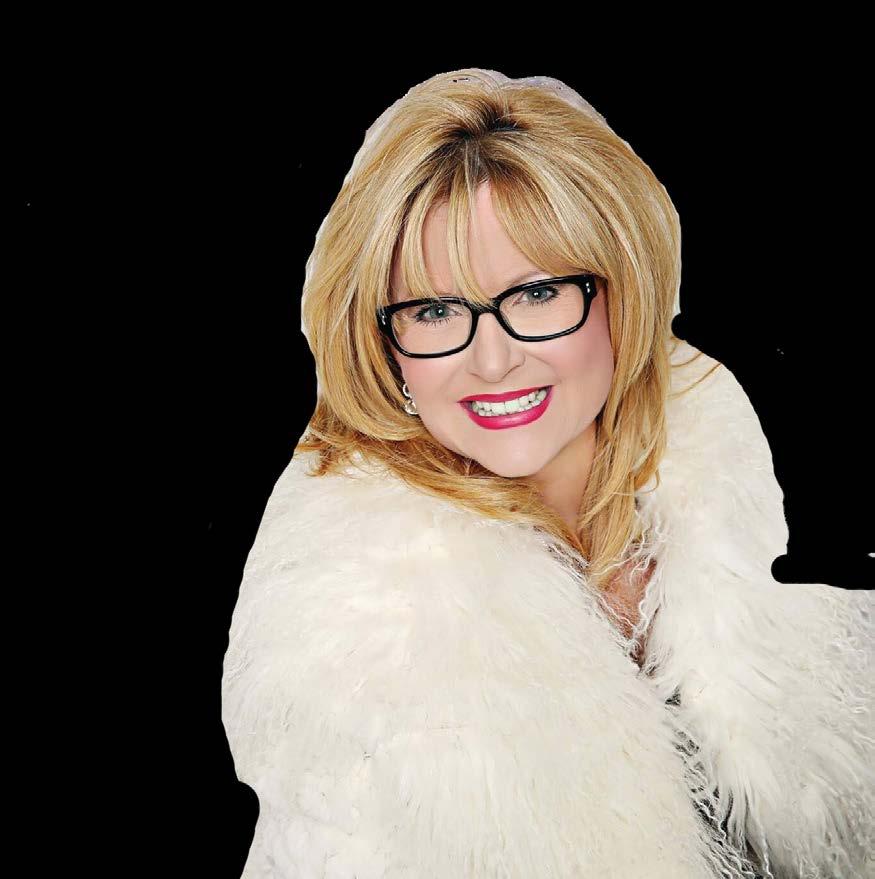

Lake Report
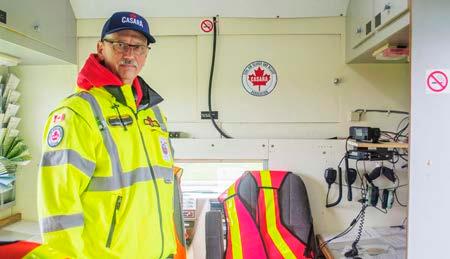
Plans for hovercraft service from Niagara still afloat, promoter says
Richard Hutton Local Journalism Initiative The Lake Report
A lot of time has passed since there has been any news on the progress of Hoverlink — more than a year, in fact.
NOTL vineyards survive bitter frost
Jill Troyer The Lake Report
NOTL vineyards dodged extensive damage from the dangerous intersection of early bud break and April frost.
T.S. Eliot wrote “April is the cruellest month,” and farmers often feel its sting. April ushers in the promise of new growth, and the threat of killing frost.
Vineyards in NOTL are ahead of schedule because of some warm days in April, which making them vulnerable to a spring frost, which descended with a vengeance last week.
For two nights, temperatures dropped low enough to flirt with disaster, as the tender buds had just started to push open.
“They were really cold nights,” said Matthias Oppenlaender, a local grape grower, and Chair of the Grape Growers of Ontario, adding, “it was a little scary that night.”
Continued on Page 20
But the man behind the project says that doesn’t mean work hasn’t been going on behind the scenes to make the proposed hovercraft service between St. Catharines and Toronto a reality.
“There’s a series of announcements coming,”
Chris Morgan told The Lake Report, adding that more will be unveiled next month.
He said he’d like to be able to share more details but he’s not able to do so yet.
“I can’t say very much: there is a (non-disclosure agreement),” Morgan said.
The Niagara-on-the-Lake resident founded Hoverlink Ontario Inc. and first revealed plans to launch a hovercraft service between St. Catharines and Toronto in the fall of 2022.
But, in March 2023, Morgan said plans had been delayed by a year but that the service was coming soon.
The delay, he said at that time, was the result of governing bodies on both sides of Lake Ontario wanting to “ensure full compliance is met on every level.”
Continued on Page 4
One man’s journey with ALS
From healthy to long-term care in months, Peter Earle is closing up shop. And life
Richard Harley | The Lake Report
Peter Earle is preparing to die on June 4.
The Niagara-on-theLake men’s shop owner has amyotrophic lateral sclerosis, or ALS, which has robbed him of his ability to speak, his mobility and soon his life.
As the disease progresses, it is forcing him to close his popular Queen Street retail store, Halley’s Fashion for Men, and prompted him to move into Upper Canada Lodge so he can have the help and care he needs.
ALS is insidious and takes a physical toll, but it hasn’t affected Earle’s intellect or awareness as he keeps up on the news and oversees the dissolution of his business, including a second store he opened in Kingston in 2017.
Make no mistake, his brain is working at full speed.
Now, almost completely paralyzed, he has no use of his hands. His speech has gotten progressively worse and it is difficult to understand him.
He has limited speech assistance, which helped him communicate during one of the two interviews for this story.
Earle relies on a wheelchair and inno -
Continued on Page 8
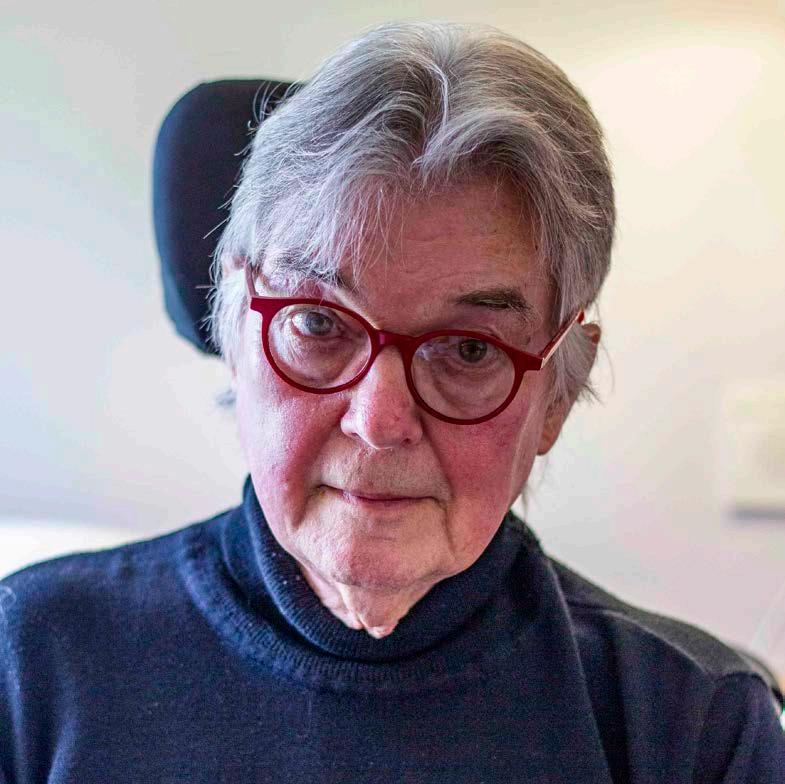
Peter Earle was diagnosed with ALS in April 2023. The disease progressed quickly and by November he was living in long-term care at Upper Canada Lodge. Now he is closing his Queen Street menswear store and making plans to end his life on his own terms.
Controversial King St. condo approved by land tribunal
Evan Loree
The Lake Report
The Ontario Land Tribunal has approved a controversial condo planned at the end of King Street.
The 17-unit, three-storey project originally proposed by Josh Bice of Butler’s Garden Development Inc., has been greenlit by Ontario’s arbitrator of land disputes after the owner appealed the project for a non-decision late October 2023.
In his decision report dated April 26, tribunal member Kurtis Andrews ordered that the town grant Bice’s appeal to rezone the land on the condition that a stormwater management plan be prepared to the town’s satisfaction. The property will be rezoned to permit the jump in density, to exempt it from rear and front yard setback standards, and to remove requirements for a children’s play area.
While Niagara-on-theLake staff recommended the build be permitted subject to a stormwater management plan, council refused Bice’s requests in January.


RICHARD HARLEY

Emergency access to Rand Estate sparks questions
Evan Loree The Lake Report
There is no “plan B” to Solmar’s emergency access point for the Rand Estate subdivision, says one expert. Transportation consultant Stewart Elkins testified at the Ontario Land Tribunal Tuesday morning, the latest in a lengthy series of hearings that will shape the future use of the back half of the Rand Estate in Niagara-on-the-Lake.
Under cross-examination from town lawyer Nancy Smith, Elkins, spoke in favour of the 196-unit subdivision proposed by Solmar Development Corp., but admitted he had “no plan B” should the proposed emergency access from Charlotte Street be unworkable.
The proposed access would require the removal of two historic stone wall pillars and a nearly 50-yearold chestnut tree.
There are additional trees of various ages near the access point, the oldest being 250 years old, Elkins said in his traffic impact assessment.
If the chestnut tree stays
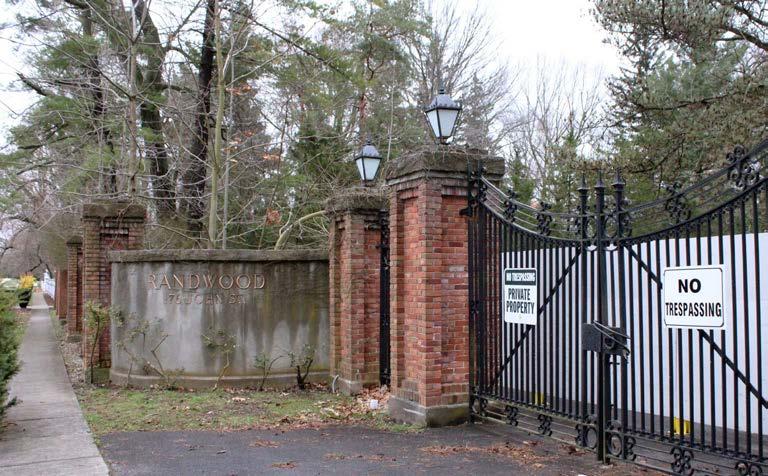
and a large emergency vehicle needs to access the subdivision, “You’d have a problem, wouldn’t you?”
Smith said.
Elkins said if the tree is preserved, a large vehicle would need to make a multi-point turn to get through the Charlotte Street entrance — if the town’s fire chief approves the idea.
Solmar lawyer Mark Flowers asked if an alternative route could be built for emergency responders if



the entrance at Charlotte is insufficient.
Elkins agreed emergency responders could use the main road entrance.
“There are municipalities that will allow single access to support a development that would function as both a primary access and an emergency access,” he said.
The proposed emergency road, located where the Upper Canada Heritage Trail intersects with Charlotte Street, was not the only
bone of contention for the lawyers.
The main roadway proposed by Solmar would run through the historic panhandle of the estate, through an existing entrance in the estate wall and opening onto John Street East.
The entrance is at 200 John St., some 8.6 metres from the driveway of Blair and Brenda McArthur, who live next to the Rand property.




The Transportation Association of Canada requires driveways and intersections be 15 metres apart, according to the testimony of expert witness David Argue, who’s testifying on behalf of the McArthurs.
Elkins said the 15-metre spacing requirement is applicable to major intersections and the one proposed by Solmar does not meet that definition.
He also said Niagara-onthe-Lake sets lower spacing requirements for intersections outside the urban boundary.
And he shared a few examples of driveways in Old Town that have not been built to the same 15-metre standard.
When David Neligan, a lawyer representing the McArthurs, questioned whether those are the standards to be striving for, Elkins said he was trying to show “that examples of lessthan-ideal exist.”
He also said his research showed cars turning left into the development would not be lining up long enough to block the Mcarthurs’ driveway.




But large vehicles turning right out of the proposed subdivision access at John Street East might have to turn wide into the oncoming lane, according to Elkins.
During Neligan’s crossexamination, he said that was “not optimal.”
“But it’s a balance when you’re looking at the design,” he said, as they were attempting to increase the distance from the McArthurs’ driveway and slow vehicles as they round the corner getting in and out of the Rand property.
“The frequency of the trucks is very low, relatively speaking. And the volumes on John Street would suggest that there are lots of gaps in the traffic that would allow this to occur,” Elkins said.
Neligan asked if a Ford F-250, or like-sized vehicle, could make the turn out of the subdivision without entering the oncoming lane.
“Likely not,” Elkins said. He said large vehicles like these would infrequently use the intersection.
The hearing continues.




Debates continued over the Rand Estate at the Ontario Land Tribunal on Tuesday, with a focus on emergency access to the proposed 196-unit subdivision. FILE
Read more online at niagaranow.com
The Lake Report partners with investigative news site The Pointer
Staff
The Lake Report
The Lake Report and its news website NiagaraNow. com have teamed up with an investigative journalism publication to give readers access to even more news and information about regional politics and public affairs.
ThePointer.com, which specializes in long-form, detailed, investigative journalism, expanded into Niagara earlier this year.

The website, led by longtime journalist Joel Wittnebel, The Pointer’s editor-in-chief, is dedicated to civic accountability.
Moving forward, readers will be able to access reports by The Pointer via links posted on NiagaraNow.com.
In addition to Niagara, The Pointer covers news and politics in Mississauga, Brampton and Caledon.
The Pointer is focused on evidenced-based journalism and specializes in investigations, features and datadriven content.
As part of its mission, The Pointer “believes that serious accountability journalism is fundamental to democracy at the local level,” Wittnebel says.
That’s one reason The Pointer decided to include
Niagara in its investigative repertoire and partner with The Lake Report.
Check out ThePointer. com/niagara now for reports by Dean Iorfida on NOTL council development proposals, a new move to hike councillors’ salaries and an in-depth look at how Niagara Falls council has rejected an entreat by Ontario’s ombudsman and retained an “exorbitant” $500 fee for residents who want to file a complaint about councillors’ conduct.
NOTL ‘falling behind’ on infrastructure
Richard Hutton
Local Journalism Initiative
The Lake Report
Wendy Cheropita says she didn’t like what she saw in a staff report about the state of Niagara-on-the-Lake’s infrastructure and asset management plan for roads.
“I found this very troubling,” the councillor said. “Job number one for us is to make sure we have safe and well-preserved infrastructure.”
The report — discussed at the April 16 committeeof-the-whole meeting — states it would cost the town $426.5 million, or $8.5 million annually over the next 50 years, to replace the town’s road system. bringing it up to current standards.
That price tag does not take into account upgrading other elements such as culverts, sidewalks and street lights.
Currently, the town receives $1.7 million of funding from various sources, including the capital levy, the federal government’s gas tax fund and the Ontario Community Infrastructure Fund.
The report revealed the results of a study, conducted by 4 Roads Management Services, examining the state of the town’s infrastructure and asset management plan.
Such studies are usually conducted on behalf of the town every five years.
Cheropita requested
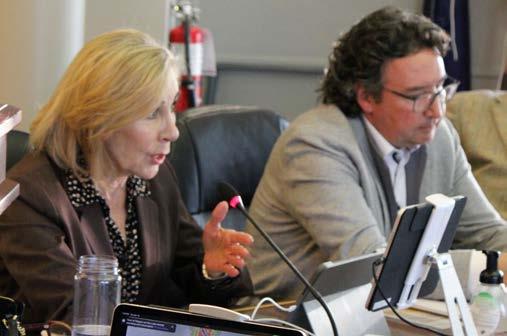
When she heard that the town is way behind on infrastructure improvements, Coun. Wendy Cheropita commented, “Job number one for us is to make sure we have safe and well-preserved infrastructure.”
clarification on some numbers the report laid out. For example, 4 Roads noted the town would need to spend $2.74 million for what it called “short-term sustainability” (short-term meaning 10 years) for town roads and an additional $8.5 million.
“Does this mean we actually have a shortfall of $2.7 million and we have to go up to $8.5 million?”
Interim chief administrative officer Bruce Zvaniga, in the absence of director of operations Darren McKenzie, said he couldn’t answer.
“I think it’s critical that you understand these numbers and I’m afraid — I don’t want to answer questions on the fly.”
Cheropita expressed some frustration.
“I wish this report had come through before we approved this year’s budget,” she said.
Committee chair Coun.
Garry Burroughs agreed, and said, “It would have been nice to have had the author of this document presented here before us and to answer all of these questions.”
Coun. Sandra O’Connor, meanwhile, wondered what kind of capacity for managing infrastructure the town has.
“For instance, if that number is $8 million and we gave $8 million (in the budget), would we really be able to do $8 million worth of projects in a year?” she asked.
She added that she knows NOTL is not alone in trying to fund infrastructure for the future.
“My understanding is that all municipalities are in the same situation regarding this funding gap to support infrastructure,” she said.
Zvaniga agreed.
“It’s true that many, if not
all, municipalities across North America, not just Ontario or Canada, are struggling with sufficient investment in road infrastructure,” he said.
Coun. Erwin Weins, meanwhile, said the report shouldn’t have come as a surprise.
“We have known about this,” he said. “We did, in the last council, get a workshop saying we’re falling behind $1 million a year. We’ve heard it in the news for years that we’re over-leveraging our children’s future today for many things.
“This should be keeping everybody up at night: $1.7 million a year. We’re falling behind,” he said.
The bad news will keep coming, he added.
“After talking to engineering, they’re telling me another report is coming up on bridges and culverts,” Wiens said. “And guess what? We’re not up to that either and so that’s going to be more money we’re behind.”
Municipalities have taken on more of the burden for infrastructure with less money coming from the province through the Ontario Municipal Partnership Fund, said Lord Mayor Gary Zalepa.
“It’s on a declining balance every year,” he said. “Every year it’s reducing. That’s really downloading at its best.”











GARAGE SALE
Saturday, May 1st (Sunday rain day) Opens at 10 a.m. 15570 Niagara River Parkway.
BARN SALE
Antiques, collectibles and more.
May 11, 9 a.m. to 4 p.m. 130 Niven Rd. at the white barn
Advertising inquiries?




Optometrist raises $15K for food bank
Julia Sacco The Lake Report
Dr. Marianne Hopkins raised around $8,000 in donations prior to the total solar eclipse on April 8 in support of Newark Neigh -
‘Series
bours — and has since topped it up to $15,000.
Hopkins gave out 2,000 pairs of solar eclipse glasses at her office in exchange for a charitable donation.
“I normally try to do a
fundraiser once a year,” Hopkins told The Lake Report and this year money was raised for Newark Neighbours.
“Everything goes toward the food bank,” said Don Mitchell, the organiza -
tion’s new chair.
Newark Neighbours extended its thanks to Dr. Hopkins and Associates, adding that the agency is always in need of more food donations.
juliasacco@niagaranow.com
of announcements’ to come starting in May: Hoverlink founder
Continued from Front Page
The hovercraft service is being touted as an option for commuters living in Niagara and working in Toronto.
The drive from St. Catharines to Toronto might take upward of two hours depending on traffic — about the same time needed to take the GO train from Niagara Falls to Toronto.
But the company says riding the hovercraft will cut travel time between the two cities to 30 minutes.
The proposed route would run between Port Weller in St. Catharines and Ontario Place in Toronto.
Previously, Morgan said the service wouldn’t be so much competing with other travel choices as it would be offering “a Golden Horseshoe rapid transit option” to people who don’t want to sit in their car for hours and want to reduce their carbon footprint.

The service would cost customers about $50 to $60 round-trip and each hovercraft is expected to hold about 180 people. Electric shuttle bus service to ports on each side of the lake are included in the ticket price.
According to its website, Hoverlink expects to serve
upward of three million customers a year and could keep as many as 8,000 vehicles off of the QEW.
It is not the first time an attempt has been made to offer a water-borne way to travel between Niagara and Toronto. In the 1990s, a hydrofoil service was offered between NOTL and
Toronto. In 2017, another hovercraft venture, the Lake Ontario Express, was proposed. A website for that venture is still online but has not been updated in several years.
More information on Hoverlink can be found at hoverlinkontario.com.




Chris Morgan, CEO of Hoverlink Ont Inc., says the proposed hovercraft service between Niagara and Toronto is still a go, it just faced some hurdles. FILE
Don Mitchell, the new chair of Newark Neighbours, accepted a cheque from Dr. Marianne Hopkins and Associates on Wednesday. Hopkins raised $8,000 from the sale of eclipse glasses and topped it up to $15,000 herself. JULIA SACCO
Speed cameras doing their jobs: Region
Richard Hutton
Local Journalism Initiative
The Lake Report
Lead-footed drivers appear to be getting the message and slowing down after Niagara Region initiated its automated speed enforcement program last September.
The program, part of the region’s Vision Zero road safety strategy, involves four cameras being deployed in different municipalities.
The cameras have been rotating to different locations throughout the region, located in the region’s 13 community safety zones, usually located near schools.
In Niagara-on-the-Lake, a speed camera is currently active on York Road near St. Davids Public School.
Earlier this year, a camera was in service on Niagara Stone Road in front of Crossroads Public School.
In a report to the region’s public works committee outlining the results of the speed camera program, preliminary data showed the presence of the cameras have had an effect on driver speed.
The program is responsible for an average seven kilometres an hour speed reduction (13 per cent) and a corresponding reduction of speeding violations from 181 in September (when the program began) to just 60 in December, a decrease of 67 per cent.

At the Niagara Stone Road location, the drop in speed exceeded the average – dropping 11 km/h to 46 from 57 during the time the camera was active.
That change impressed Lord Mayor Gary Zalepa.
“It’s a pretty good indication the program is working and speeds are being affected,” he said.
And even when drivers have been caught speeding and issued a ticket, he said he expects the presence of cameras will bring about lasting change in driver behaviour.
“If I got a ticket, I’d be much more aware and focus on not getting another one,” he said.
That’s something the report bears out. It states that the reduced speeds continued even after a camera was moved to another location.
“Even moderate changes in speed can make a huge difference in safety when it comes to vulnerable road users,” said Frank Tassone, the region’s director of transportation, the department overseeing the Vision Zero initiative.
Lowering driver speed is “a key factor” in working toward reducing, and eventually eliminating, serious injuries and deaths on regional roads, he said.
While the region has painted a positive picture of its road safety strategy, drivers who were ticketed have shown to be frustrated, with many telling The Lake Report just how they felt back in March.
One driver complained of receiving a ticket for going 51 km/h on Niagara Stone Road despite Crossroads being closed for a professional activity day while another thought a $257.50 fine received for driving 67 km/h in the 40 km/h zone was “disproportionately high.”
Encouraged by the early results, however, the region plans to expand the program with the addition of four more cameras being added each year in 2024 and 2025.
Additionally, cameras will be added to 12 more of the region’s community safety zones, bringing the total to 25.
The program will expand to municipally owned roads starting in either mid-2025 or early 2026.
Expansion will come at a cost, however. The initial four cameras will cost $114,948 annually for the next five years while adding four cameras next year will add $133,152 annually for 54 months.
The final cameras added in 2026 will result in a cost of $145,433 annually for 42 months.
The costs associated with the and its expansion will be off-set by fines collected through the program, the region states.
In the event fines exceed costs of the program, funds will be invested in other road safety measures that are a part of Vision Zero.
So, how does automated speed enforcement work?
Speed cameras capture a digital image and record the speed of drivers in community safety zones.
This information is provided to a municipallyrun joint processing centre where provincial offence officers confirm a speeding violation has occurred and issue tickets to those in violation of the posted speed limit.
Niagara provincial offences court is responsible for managing those charges including prosecution of disputed charges and collection of fines.
Regional chair Jim Bradley said he was encouraged by the “promising” results of the program.
“As councillors, far too often we hear concerns from constituents about drivers speeding through communities across the region,” he said, adding that the early results provide the region with the “confidence” to expand the program.
NOTL home builder teams up with Habitat for Humanity
Richard Hutton Local Journalism Initiative The Lake Report
For Domenic DiLalla, it was an opportunity to give back to the community by doing what his Niagara-onthe-Lake business has done for more than three decades — build homes.
DiLalla, founder and president of Centennial Homes, committed his construction company to build four new townhomes in Thorold for Habitat for Humanity Niagara.
“As a locally owned, family business, it brings both myself and my staff great joy to be able to give back
to the community that has helped us grow,” DiLalla said at a ground-breaking ceremony to kick off the build.
“Together, we are not just building houses,” he said.
“We are building hope, stability, and brighter futures for our community.”
Habitat for Humanity Niagara CEO Mark Carl said the group had never received such a gift in its history.
“This is a significant contribution to Habitat Niagara and the community as a whole, because this generous gift allows Habitat Niagara to build more affordable housing to help Niagara
families,” said Carl.
“By building these four townhomes, Centennial Homes and their team of sub trades will make a positive impact on the lives of local families who will soon call these homes their own,” he added.
DiLalla, meanwhile, said he and his staff at Centennial — named as the Niagara Home Builders Association’s Company of the Year in 2023 — are looking forward to seeing the results of the partnership with Habitat.
He said the company’s collaboration with the nonprofit organization is part of its commitment to “making
a meaningful impact” and it’s excited for “the positive transformations” the homes they’re building in Thorold will bring to the families that move in and the community. Habitat for Humanity Niagara does not give away homes for free. Qualified families selected for Habitat’s homeownership program partner with the agency by completing 500 volunteer hours and paying an affordable mortgage.
The mortgage payments are deposited into a “fund for humanity,” allowing Habitat Niagara the opportunity to build more homes and serve more families in the Niagara region.






Speed camera on York Road.
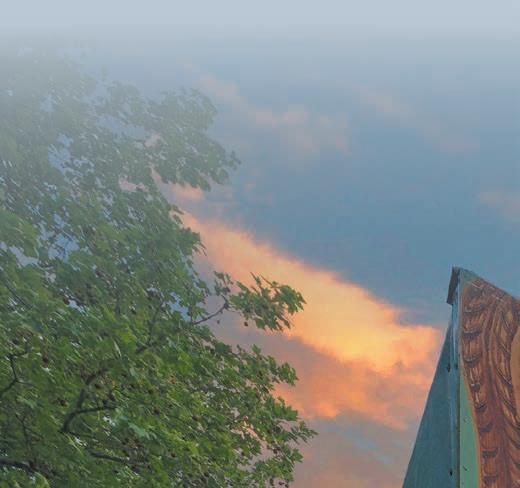
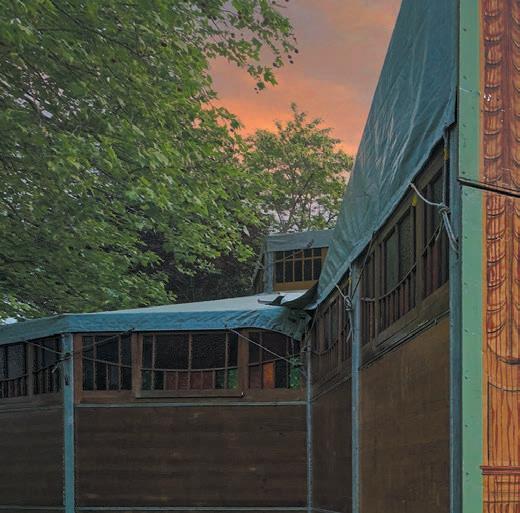
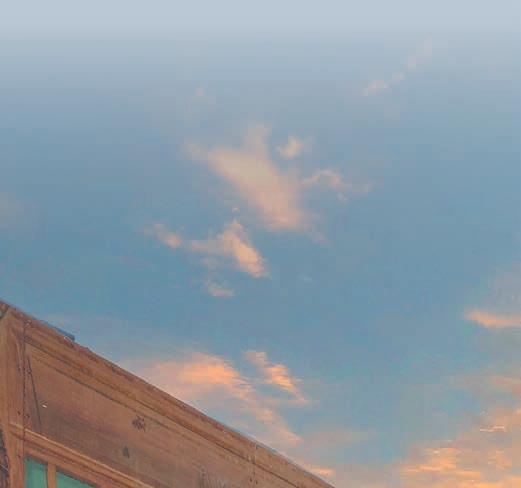

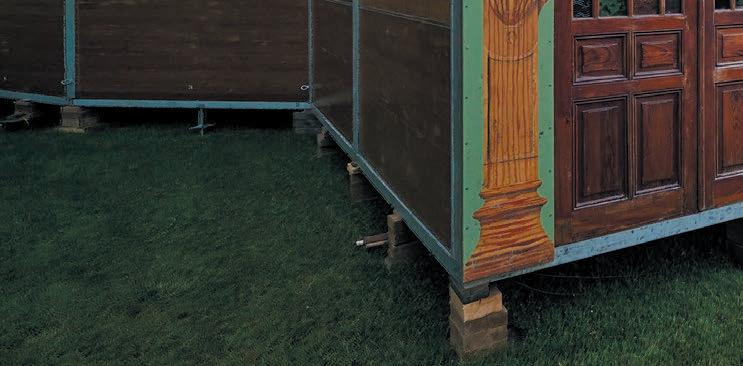
THE SHAW VARIETY SHOW
MAY 17 – OCT 6
Harkening back to the days of the original late-night talk show, enjoy an evening jam-packed with bits and banter, lively songs, random trivia and mind-blowing magic tricks!
THE ROLL OF SHAW
MAY 30 – SEPT 28
Take an impromptu romp with Bernard Shaw’s most famous characters! Come be a part of a one-of-a-kind show where every night you help decide the ending.
KABARETT
JUNE 14 – OCT 12
A night in Berlin – music from the Weimar Era.
COTTON CLUB
JULY 17 – OCT 11
A night in Harlem – sizzling numbers from New York’s hottest nights.
TICKETS FROM $35


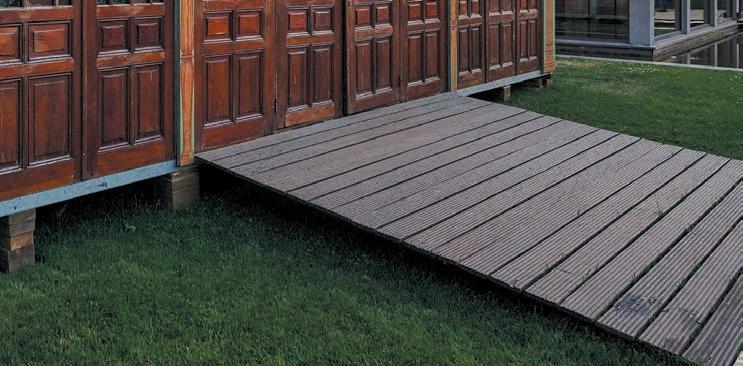

CONCERTS AND EVENTS
FATHER’S DAY PLOUGHMAN’S LUNCH
JUNE 16 | $85 PER PERSON | $10 WORKSHOP
Ticket to One Man, Two Guvnors extra
Celebrate Dad with a pint and a hearty ploughman’s lunch on Father’s Day, in the spectacular Spiegeltent. Add on the workshop to make a boutonniere to wear during lunch, and enjoy One Man, Two Guvnors as a family.
FOOTLIGHTS
JULY 6, AUG 3 & 24, SEPT 21 & 27, OCT 5 | TICKETS $30
Shaw Ensemble sing the songs from the Golden Age of Broadway.
REIMAGINING CLASSICS
JULY 7 | TICKETS $35
Join director Philip Akin and University of Toronto Professor of Dramatic Arts, Dr Lawrence Switzky as they explore the plays in our 2024 Season. Thought-provoking analysis of The House That Will Not Stand and others.
PLUS!
The return of Gospel Choir, Coffee Concerts, What’s in your Songbook and Pop-up Patio. BUY
Photo by Michael Cooper
Two trees get axed at town meeting
Evan Loree The Lake Report
Council had the same conversation twice Tuesday night.
Two residents brought similar requests to Niagaraon-the-Lake councillors: to allow them to cut down trees on their private property, after town staff refused to grant them tree cutting permits.
After the two homeowners pled their cases, council agreed to the permits.
The town regulates the types of trees people can cut down on their property, thanks to a bylaw passed in 2019 under the previous council.
Council gave permissions to cut down mature trees on private property to Princess Street resident Adriana Del Vasto and to Chris Pratt, who lives on Nassau Street, after each argued the cuttings should be allowed.
Pratt will be removing a “messy” honey locust, which has become a pain to maintain in his old age, he said.
The tree produces an “ungodly” amount of seeds each year, he said, and cleaning them up is timeconsuming.
Pratt owns a private pool and said he loses about half the swimming season each year due to tree seeds fall-
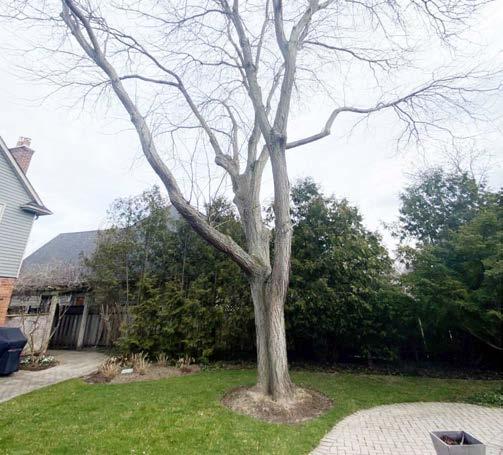
ing into his water.
Del Vasto asked permission to remove a large black walnut tree from her property on Princess Street, which she says is beginning to cause cracks in her foundation.
The tree roots are impacting a 90-year-old limestone wall, also on the property.
Coun. Sandra O’Connor voted in the minority twice, wanting to keep the trees standing.
She raised concerns about the town’s low tree coverage, and said the town should make an effort to protect native trees like the black walnut.
“Every tree counts,” she said.
A report from the Niagara
Region, published February this year, details an assessment of the region’s tree and forest canopy, which states for each municipality what percentage of its land area is covered by both individual trees or larger forested areas.
Niagara-on-the-Lake has the lowest reported tree and forest canopy percentage of all the region’s municipalities, according to this report, at 18 per cent. The regional average is 25.4 per cent.
When O’Connor cited this statistic during a discussion about the tree bylaw on Feb. 13, Coun. Erwin Wiens said this low number is partly due to a surplus of farm land across town. The
report states that 49.5 per cent of NOTL’s land area is soil and bareland.
During Tuesday’s discussions, O’Connor was not satisfied when her peers added a condition to each permit requiring the residents plant news trees in the place of the ones being cut down.
A one-to-one replacement “circumvents” the intention of the municipal bylaw, she said.
In both cases, bylaw enforcement officer Devin Durocher said the trees in question were in good health and posed no risk to the structural integrity of the nearby houses.
The town arborist reported no foundation cracks during his inspection of it, he said.
Wiens said he was against the town’s tree bylaw and had been since the start.
“We gotta stop worrying about the process and start planting trees,” he said.
In the past, Wiens has said the town’s tree policy unfairly penalizes residents for a failure of town policy.
Coun. Gary Burroughs appeared to sit on the fence for part of the discussion, first saying the town implemented it’s tree bylaw with care under the previous council, only to say, “I’m not sure we’ve ever saved one tree with our bylaw.”
Neighbours had petitioned against build
Continued from Front Page
Andrews characterized the town’s objections as “generally concentrated on compatibility concerns,” like height, built form, density and character.
“The town argues that the proposed development, being a three-storey, 17-unit apartment building, does not ‘fit’ within the surrounding established lowdensity neighbourhood,” he said.
Consultants from Niagara Planning Group, which is handling Bice’s application, have argued the project supports provincial policy goals to build more housing.
All parties agreed the build would help provide a range of housing options in Niagara-on-the-Lake, Andrews said.
And so the whole matter came down to whether it was “sufficiently compatible with the surrounding neighbourhood,” he said.

A controversial three-storey condominium proposed on King Street has been approved, despite loud opposition.
The town hired planner Mark Dorfman to defend its position at the hearings in February.
He argued the proposed condominium was incompatible with the mostly lowrise neighbourhood.
In his decision report, Andrews said the tribunal rejected his argument, siding with NPG planner Aaron Butler who testified the building, while different from its surroundings, was still compatible.
Town planner Aimee Alderman argued the same and both called Dorfman’s
definition of compatible too narrow, Andrews said in his report.
The building is only made possible because the town committee of adjustment allowed Bice to consolidate the land from three lots into one at a meeting in October 2022.
“They (the town) suggested that the pieced-together lot was amalgamated by the applicant covertly and deliberately without disclosing its eventual planned purpose,” Andrews said.
“The tribunal finds that the applicant clearly went
through the proper processes,” he added.
Andrews said the history of the lot formation was irrelevant and the tribunal was not in a place to retroactively adjudicate on the merits of the boundary adjustment.
Residents Patrick Gedge, Endre Mecs and Jason Quesnelle, who live near the lot on King Street, all attempted to submit evidence but it was rejected as Bice’s lawyers argued they were not given time to crossexamine the evidence.
Andrews also said participants like the three residents could not give evidence and asked they condense their comments to a five-page submission.
He said he considered the residents’ statements but he made no further reference to them in his decision.
Bottom line: His report concluded that the proposed condo was sufficiently compatible with the surrounding neighbourhood.






Chris Pratt plans to cut down this healthy honey locust on his property after being granted permission. SOURCED

NEWS
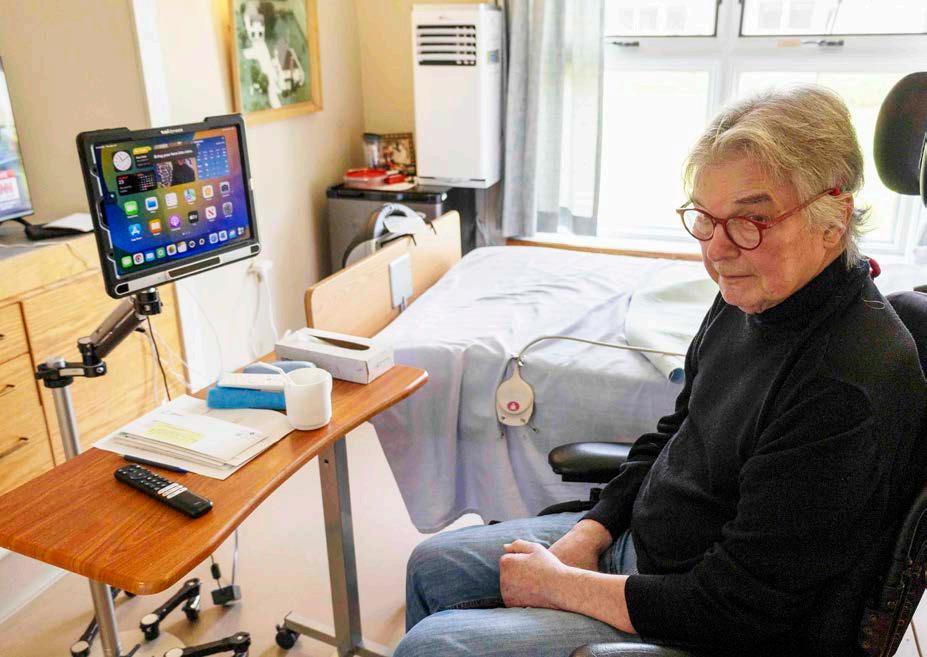
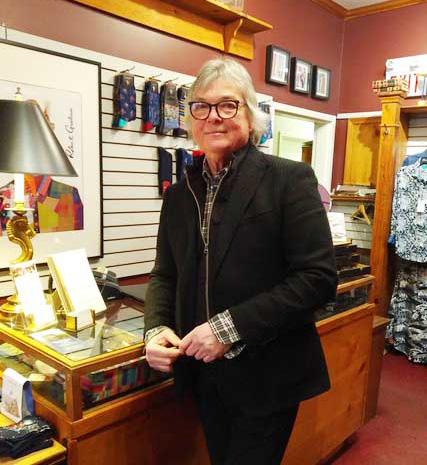
‘I have no communication. And that is no life’
Continued from Front Page
vative eye-tracking technology that recognizes his eye movements, allowing him to operate a computer in his room.
With his brain fully aware and functional, it’s a frustrating life.
A man who lived for social interaction and communication, Earle now is mostly restricted to creating short emails, each slowly, painstakingly constructed as his computer interprets the blinking of his eyes.
Through it all, he remains in high spirits — as high as they can be — and is still active in his business, booking advertisements to sell off his remaining merchandise.
Halley’s Fashion for Men, which Earle took over 10 years ago, has been around since 1992.
It is a bona fide retail landmark in downtown Niagara-on-the-Lake. And he loves running it.
If you live in town, you’ve likely seen him on the street, around the shop or perhaps at the Stagecoach restaurant getting breakfast. He wasn’t always in the fashion business. He changed careers after 30 years as the head of government and media relations at steel giant ArcelorMittal Dofasco.
With his experience, he’s media savvy and closely follows politics.
He accomplished most of it alone. Married once long ago, he had no children and never wed again.
Now 74, he is forced to
come to terms with his illness, which came on suddenly.
In July 2022, Earle knew something was wrong. He had symptoms of what he suspected was a neurological disorder.
“I’m pretty intuitive,” Earle says during an interview in his room at Upper Canada Lodge.
He saw his family physician and was immediately sent to the McMaster University Medical Centre.
He was told his suspicions were right — he had all the signs of a neurological disorder, but doctors weren’t sure what it was.
By the end of October, he was advised he might have ALS.
At that point it was manageable.
He was having issues with his hands and arms not co-operating, but he was still driving to Kingston to manage his other shop, still working.
He was officially diagnosed with ALS in April 2023.
Even with the diagnosis, he still felt mostly OK. His right hand and arm were weak and he had trouble controlling them. His body was starting to betray him.
Through July 2023, though his symptoms had progressed mildly, he was still working, still having those breakfasts at the Stagecoach, where he’d talk politics with friends.
“I was near normal,” he says.
That August, he began only driving locally and stopped going to Kingston. Things were looking worse.
On Sept. 1, 2023, he fell
at home and couldn’t get up. He had lost control of his arms.
Pulling himself with one arm, it took him an hour and a half to crawl to his front door, where he shouted and shouted until his neighbour Joe Rose heard him and came to help.
“ My mind is still good. But it’s the right thing to do. The alternative is much worse. Why would I go on like this and get nothing but worse?”
PETER EARLE ON PLANNING TO END HIS LIFE
His condition deteriorated rapidly.
He was admitted to the St. Catharines hospital on Sept. 4 and Hotel Dieu Shaver rehab hospital on Sept. 20.
On Nov. 2, he moved into Upper Canada Lodge.
Just like that.
He had left his home in September — “and I never went back.”
He says he will take his life into his own hands when he loses complete control of his body. That is happening quickly and June 4 is barely a month away.
In the meantime, friends have been taking him out about once a week to the Shaw Festival just down the road.
And while he’s in good spirits despite it all, the
difficulty communicating can be frustrating.
It’s particularly tough in social situations.
“I had a very hard time at a lunch meeting with my neighbours,” he says.
“Five people in a social setting, who are not used to hearing me. It’s very hard for everyone.”
Sometimes people don’t know how to interact. Because his speech is much slower than normal, they often start filling in the blanks for him, or trying to finish his sentences — which he finds irritating.
“They do all sorts of things other than listening and waiting and clarifying when they don’t understand.”
Dr. William Brown, a friend of Peter’s, says he’s guilty of the same thing.
“I mean, I noticed that the tendency for most people who visit him, is it takes so long to get it out, that they try to complete what he’s saying. They kind of step on him.”
“And I do it, too. But he really doesn’t like that. Partly because a lot of us were guessing wrong.”
As Earle notes, “Everyone is guilty of that because we take our communication for granted.”
Brown, a professor of neurology (who writes a weekly column for this newspaper), met Earle by chance at the community centre in January 2023.
He noticed Earle on one of the stationary bikes and saw that his right arm was weak. He struck up a conversation.
They realized Earle’s ALS specialist was John
Turnbull, a former student of Brown’s at Western University, who now leads the ALS clinic at McMaster in Hamilton.
In those early days, it was just Peter’s right arm giving him trouble.
They became friends and would go out to the Charles Inn for a drink about once a week.
“And then that right arm, it was almost useless within six months from my meeting him,” Brown says.
Then it was his left arm and then his speech began to decline.
Brown visits him regularly at Upper Canada Lodge and admits it’s tough to watch what Earle is going through.
“Here’s a guy, now, almost completely paralyzed — functionally completely paralyzed in his arms — so he can’t use his iPhone and can’t write stuff out,” Brown said.
“And I think he’s found it very frustrating.”
It’s especially challenging for someone like Earle, who is “all there.”
“It’s really frustrating to tell people what you’re feeling, what you’re thinking about, what’s really bugging you, what you want and whether they’re fed up with you for the moment, or kind of whatever — or they want to go to the can,” Brown says.
It also can be awkward for people who try to communicate with him.
“What do you say to somebody that’s in such bad shape?”
Brown says the technology is coming along to help people like Earle commu-
nicate, but it’s not there yet, nor is it affordable for the average person.
But for someone like Earle, the technology could literally be a life-saver.
“If reasonable speech could be restored to Peter, he would probably want to continue on. Probably. That’s what I think. I’ve never asked him that question,” Brown says.
Knowing the date he will die is comforting in a way for Earle.
“My mind is still good,” he says. “But it’s the right thing to do. The alternative is much worse.”
Eventually, as full muscle control is lost, ALS would steal his ability to breathe.
“Why would I go on like this and get nothing but worse?” he says.
“Really, I have no communication. And that is no life.”
Earle is full of praise for the medical system, including the staff at Hotel Dieu Shaver and Upper Canada Lodge, who have helped him manage his life and cope.
He’s extremely thankful to his staff and his old friend Warwick Jones, who have helped him continue to operate and close down the business, and to longtime friend Jim Ryan.
On June 4, Earle will embark on his final life journey.
There will be a reception to celebrate his life on June 12 at the Niagara-on-theLake Golf Club.
If Earle could be there, no doubt the latest in news and politics would be a big part of the conversation.
editor@niagaranow.com
Left: Seen in his room at Upper Canada Lodge, Peter Earle uses his iPad with eye-tracking software. Right: Earle at his store, Halley’s Fashion for Men. RICHARD HARLEY

Losing speech is one of the worst effects of ALS


Dr. William Brown Columnist
Amyotrophic lateral sclerosis (ALS) is one of nature’s worst diseases, up there with the dementias and some cancers.
For some, cancer has become a manageable disease. Not so with ALS.
It destroys motor nerve cells in the brain and spinal cord, leading to progressive paralysis in muscles that underpin posture and movements of the limbs, neck and trunk, breathing, swallowing and speech, all while leaving the mind intact.
Unfortunately, with ALS, like most other degenerative neurological diseases, drugs do little to slow the disease and certainly don’t stop or cure it.
ALS shows up in differing ways. Sometimes via weakness begins in a limb, other times with weakness holding the head up, difficulty articulating speech, trouble swallowing or perhaps shortness of breath.
Then it spreads to motor nerve cells in other regions of the spinal cord, brainstem and motor cortex and
to a minor extent, regions beyond the motor system.
The result is relentless, progressive and extensive paralysis. Worst for many who have ALS is their increasingly laboured speech, which makes it difficult for others to understand what the patient is saying — efforts that sap the energy of patients and visitors alike.
Sometimes visitors and medical staff become baffled and uncertain about how to help the patient to speak with more ease and less frustration, while managing their own uneasiness and the unfamiliar strain of trying to make sense of what ALS patients with speech problems are saying. It’s tough. It’s best to let patients take as long as needed to make themselves understood while avoiding the temptation to interrupt them by verbally stepping on their efforts to “get to the point” — because the real point is to let them get there on their own without being hurried.
Patience goes a long way to making what seems indecipherable speech, decipherable. The struggle is similar to trying to figure out what someone is saying in a language with which you might be passingly familiar, but not enough to make sense of what they are saying to you.
But unlike Google, which does an admirable job of translating languages on
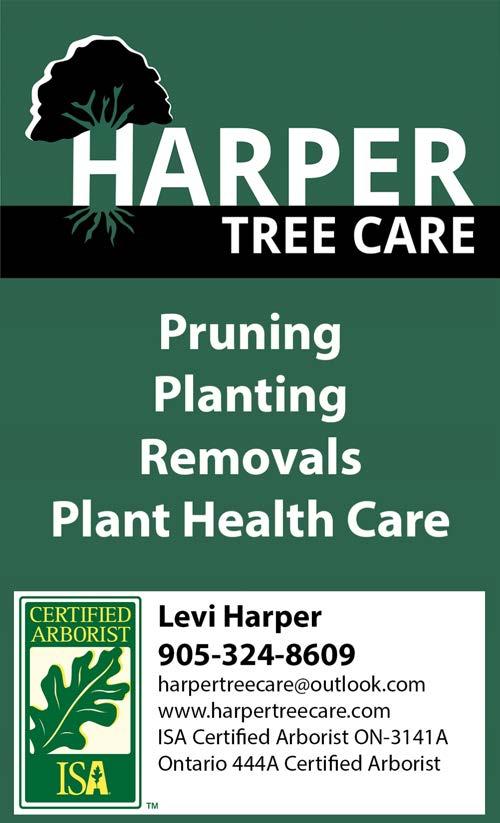

the spot, so far there’s no such option for translating the slow, laboured and slurred speech typical of patients with ALS.
For that conundrum, there is some progress. Implantable electrodes positioned over the speech area of the neocortex coupled with AI-assisted computers have been harnessed to record and make sense of the patterns of complex electrical signals generated by hundreds, even thou-

sands of nerve cells associated with specific syllables, words and phrases as patients speak.
Progress is promising but slow and the technology is not ready for patients with ALS. Studies involve small numbers of patients, intensive fatiguing training and technical resources available only in a few high-tech centres in the world.
One simpler option would be to record what the patient says as they
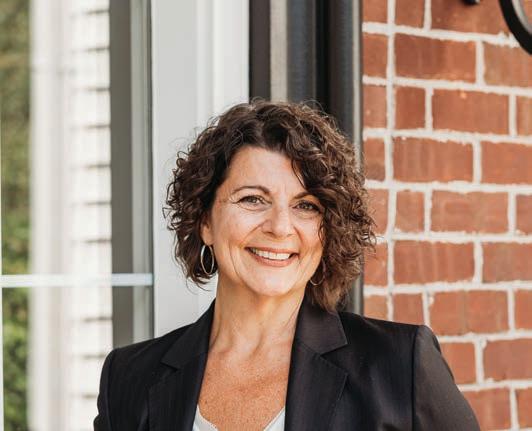
repeatedly read a prepared script containing common useful words and phrase and analyze them with self-learning algorithms for translating the patients’ speech into clear text or spoken language.
Which brings me to Peter Earle, who I met 16 months ago and learned he has ALS.
Less than two years ago, the paralysis was confined to his right arm and hand, which later spread to the
left arm, leaving him unable now to use both arms and hands.
Then last summer Peter developed the first hint that his speech was affected. It has progressed to where Peter labours with great effort to make himself understood and others struggle to understand him, creating frustration and misunderstanding for all.
Should his speech decline much further he would be “locked in,” with a sharp mind but unable to make his thoughts, intentions and feelings known except by using an eye-tracking device to spell out words and sentences, one letter or perhaps a word at a time.
Eye-tracking works but is dreadfully slow and doesn’t offer the free give-and-take of social conversation of which Peter was a master. It was one of his gifts others enjoyed about him just a few months ago.
Despite the escalating pace of his ALS, Peter remains who he was when I first met him: a naturally warm, engaging man with a knack for storytelling and well-honed social sense and humour, coupled with incredible resolve despite huge ongoing and increasing challenges.
Dr. William Brown is a professor of neurology at McMaster University and co-founder of the InfoHealth series at the Niagara-on-the-Lake Public Library.

Peter Earle’s eye-tracking device allows him to work his iPad and construct emails.

The Lake Report

Publisher: Richard Harley
Editor-In-Chief: Richard Harley
Managing Editor: Kevin MacLean
Design & Layout: Richard Harley
Advertising: Megan Vanderlee, Lindsay Le Blanc
Contributors: Denise Ascenzo, Dr. William Brown, Penny-Lynn Cookson, Kevan Dowd, Linda Fritz, Patty Garriock, Steve Hardaker, Zahraa Hmood, Richard Hutton, Brian Marshall, NOTL Museum, Ross Robinson, Julia Sacco, Kyra Simone, Tim Taylor, Jill Troyer, Dave Van de Laar, Janice White, Richard Wright, Joanne Young and many more members of the NOTL community

The Local Journalism Initiative is funded by the Government of Canada.


Your Lake Report is the proud winner of 96 national and provincial awards for journalism and advertising excellence.

Contributed by Patty Garriock
“Life is what we make it, always has been, always will be.” - Grandma Moses
HOW TO GET IN TOUCH
Email:
Letters: editor@niagaranow.com
Story Ideas: editor@niagaranow.com
Advertising: advertising@niagaranow.com Phone Newsroom: 905-359-2270
Advertising Department: 905-932-5646
Office Address
496 Mississagua St., NOTL, Ontario, Canada. Mailing Address PO Box 724, Niagara-on-the-Lake, L0S1J0
Have a lead on a story?
Call 905.359.2270 or send an email to editor@niagaranow.com
Queenston choir feels it
Richard
Harley
Editor-In-Chief
Editorial

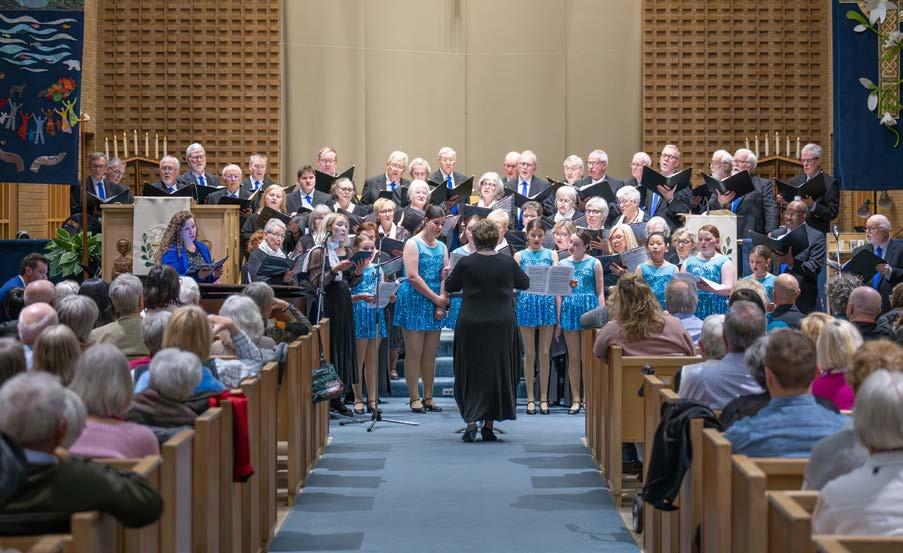
Courage in the face of death
One can only hope that if we ever develop a disease like ALS, we handle it as well as Peter Earle has.
As related on the front page of this week’s edition of The Lake Report, the Niagara-on-the-Lake resident and owner of the longstanding Halley’s Fashion for Men retail store on Queen Street, has been living with ALS for a little more than a year.
It came on suddenly and took him from driving between his two store locations in July 2023, to fullon, long-term care support by November.
A social man, he has decided that as the disease progresses and he loses his ability to communicate, he will end his life, on his own terms.
His ability to speak is severely restricted, though he can get out sentences with immense effort. Thanks to innovative technology, he can laboriously construct short emails using a computer that tracks his eyes.
So, he has decided his life will end on June 4. It’s a sad, but also, in a sense, fortunate situation.
Sad because we’re losing
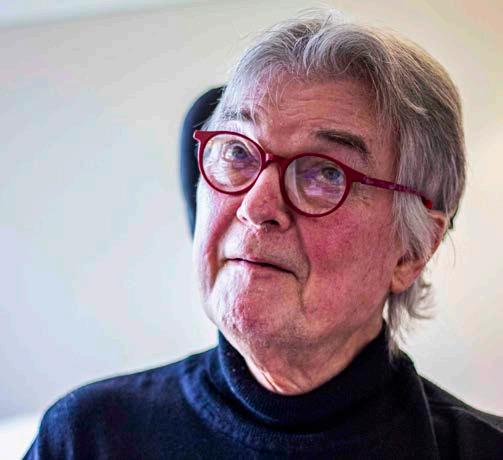
Peter Earle plans to end his own life on June 4.
a man too early to a horrible disease that we still don’t fully understand or know how to treat.
But fortunate that we live in a country where we can make the decision to end our lives on our own terms in untenable situations such as this.
One has to admire Earle for making that tough call and doing so without showing fear or anger.
Though, of course, there is a degree of anger. He’s angry at the disease, frustrated at not being able to control his body while his mind functions as well as ever.
But he smiles. He laughs — even at bad jokes made in an attempt to bring some light to his life.
He continues to wind down his businesses, remains cheerful despite it all and poses for photos for our story about his life, and about the end of an era as his store closes.
Bravery might be the right word. Along with courage and fortitude.
He sings the praises of the people who have helped him through his illness. Not just his friends, neighbours and store staff, but the doctors and support workers from McMaster, St. Catha-
WEDNESDAYS & THURSDAYS
rines hospital, Hotel Dieu Shaver and Upper Canada Lodge.
At a time when it would be easy to be bitter and resentful, he is trying to see the positives and spread a message of thankfulness and appreciation for what we have as Canadians, and the good people we will all eventually lean on when we are at the end of our own journeys.
He’s taught us the importance of caring for people in our own lives, those might need extra help and understanding. It can be as simple as taking the time sit with them, to listen and not talk.
Meanwhile, as Canadians, we should continue to advocate for access to affordable treatments and technology that can help us make the most of our final days and years.
Niagara-on-the-Lake is losing a light in Earle, who was a friend to many and continued making friends during his illness.
Through experiencing his story, he is now our friend, too.
We respect his decision to end his life. And we applaud him for his bravery in relating it so that others may learn and appreciate this gift of life.
editor@niagaranow.com
Lisa Cosens Brillon conducts the Niagara Star Singers, Queenston Women’s Chorus and the Niagara Men’s Chorus during a special presentation at Trillium United Church on Saturday. DAVE VAN DE LAAR
LETTER OF THE WEEK
Cats shouldn’t be roaming outdoors
Dear editor:
There has been a lot published about Zeus the cat, who was trapped and dumped in rural Niagaraon-the-Lake, but no one has addressed the real issue.
Municipalities should pass bylaws but just punishing frustrated neighbours is not the answer.
I am a cat lover and have had cats for more than 30 years.
All of our cats have been rescues. Some we got from a shelter and others showed up in our yard.
After feeding them and trying to find the owners we either kept them or took them to a shelter.
Where we lived there were a large number of cats allowed to roam, plus strays and a feral colony, so we have a lot of first-hand experience with the issue.
Municipalities do need some new bylaws but they also need to address the root problem. The bylaws should prohibit cats from being allowed to roam loose.
Yards are much smaller

Judith Baird says
these days and it is almost impossible to keep a cat from going into a neighbour’s yard.
I have bird feeders and should not have to stop feeding the birds just because the neighbour’s cat decides to use my yard as a hunting ground. Friends also have complained about having to clean up after cats spray-
ing their porches or doors or using their planters and garden beds as a litter box. Contrary to what some cat owners think, their cat is likely to be a nuisance to someone at some point. Zeus was trapped and dumped elsewhere but I have heard of people doing much worse.
Although it is an adjustment, most cats can be
trained to stay indoors. It takes patience. It helps to provide them with toys or, for a younger cat, a playmate.
The best solution is to keep them in from the time they are a kitten. It has been proven that indoor cats live a longer, healthier life. Hopefully Zeus will make that transition.
For decades there have been municipal bylaws prohibiting dog owners from allowing their animals to roam off leash.
While those bylaws were driven by a fear of dog attacks, they provide a broader benefit. They protect the animal from being hit by a car, attacked by another animal or a person.
It also protects the animal from getting into toxic substances like rat poison, weed killer or anti-freeze that someone may have in their yard.
Municipalities should give cats the same protections we give dogs.
Judith Baird NOTL



Canadians should stand with Israel against Hamas terrorism
Dear editor:
This is in reply to Sophia Voogt’s April 11 letter, “Hamas was wrong, but so was the Israeli government.”
She claims her letter “is not a defence of Hamas in any way,” but then explains away the group’s murderous terrorism because of “the Israeli occupation of Palestine.”
Let’s be clear: Israel has not occupied Gaza since 2005.
Hamas is not interested in fighting Israel over real estate; the terrorist group’s charter, its actions and the statements of its leaders all
make perfectly clear that they seek the violent destruction of Israel, and in its place, to create a theocratic regime akin to the Islamic State.
Hamas is a genocidal death-cult that murders, rapes, tortures, dismembers and kidnaps. There is no negotiation with a bloodthirsty group like the Islamic State or Hamas — only victory or defeat.
All Canadians of conscience must stand with Israel as it fights a genocidal enemy, Hamas.
Veronica Balaj NOTL
Supporting and growing our wine and beer industries

Wayne Gates Special to The Lake Report
Over my 10 years and four terms as the MPP representing Niagaraon-the-Lake, I have been proud to work alongside key stakeholders and area businesses in our wine and beer sector to support the growth and success of the industry.
I want to share how some of the good work we have been doing together has paid off — and some of my plans for future reforms to continue to support the industry.
We know how critical
the wine industry is for our economy, job growth and heritage in Niagara-on-theLake.
We know Niagara is responsible for 80 per cent of the country’s total grape and wine production and that it has huge impacts on other businesses in NOTL — including the Shaw Festival, area restaurants and heritage attractions such as Fort George.
However, we know that historically, growth in our wine industry has lagged behind similar jurisdictions in British Columbia. We also know there remain many hurdles to continued success and growth.
That is why I have worked diligently over the last several years to introduce legislation to eliminate the 6.1 per cent basic tax on all on-site retail sales of wines with 100 per cent Ontario grapes and VQA wines.
Last month’s provincial budget finally eliminated that tax.
The levy was not applied to foreign-imported wines, so this reform provides equal opportunity for Ontario wine.
I worked with local stakeholders, including local wine producers like Big Head Wines and Southbrook Vineyards, and stakeholder organizations like the Wine Growers Ontario and Ontario Craft Wineries, to introduce legislation to end the tax a total of three times.
And I’m glad to say our hard work paid off. This was an important reform.
It’s a big win for everybody in Niagara-on-theLake, and I’m proud of the work we have done. But there is more still to do.
We need to the provincial government to do a better job, quite frankly, of investing in post-secondary edu-
cation and infrastructure to support the local economy.
Partners like Brock University and Niagara College employ more than 8,400 people, and their research and education into the wine industry has an enormous positive impact.
We also need more sustainable infrastructure, in particular, two-way, all-day, every day, GO train service to Niagara.
And we need to support key local employers like the Shaw Festival in their All.Together.Now campaign — the beneficial relationship between employers like the Shaw and the wine industry is a two-way street.
We also know how vital protecting the Greenbelt is for preserving the industry. It’s also the right thing to do in order to leave a healthy environment for our kids and grandkids.
I have been a proud
champion for the environment as MPP. Unfortunately, we know the record of Doug Ford’s government in attacking the Greenbelt and the lack of support they have given to our farmers.
We must ensure we hold the government accountable, as we have over the last two years, in preserving the Greenbelt and protecting arable land across Ontario.
Finally, we must do more to support our craft beer industry. First and foremost, we must address the regulatory hurdles that stifle the growth of small breweries.
The current system, with its complex licensing procedures and restrictive distribution regulations, disproportionately favours larger players in the market. We need to level the playing field by streamlining the licensing process for small brewers and promoting fair access
to distribution channels. It’s also high time we reevaluated the taxation policies that burden our local breweries. Skyrocketing taxes on beer production not only squeeze the margins of small businesses but also drive up prices for consumers.
By implementing tax incentives and reducing excise duties for craft breweries, we can foster a more competitive environment that encourages growth and innovation.
Working together, like we did on my legislation to eliminate the 6.1 per cent wine tax, we can support good jobs, help small business, grow the local economy and protect our natural heritage.
It’s a win-win-win — so let’s work together and get this accomplished.
Wayne Gates is the NDP member for the provincial riding of Niagara Falls.

while harming animals is no solution, cats shouldn’t be allowed to roam freely. FIREFLY
Israel’s flag. WIKIPEDIA

OPINION
A collective sigh of relief over the Wilderness


Brian Marshall Columnist
As Richard Harley reported in this newspaper last week, it appears as though an agreement has been reached for the conveyance of full title for the Wilderness to the Niagara Foundation.
A collective sigh of relief was shared by everyone passionate about heritage preservation in Niagara-onthe-Lake.
All of us have watched this iconic property over the past few years of legal wrangling around its ownership and prayed that some settlement could be arrived at so that the historic buildings and lands might be restored and preserved.
But, aside from the buildings — which we’ll get to later — what makes the Wilderness so important to our cultural heritage landscape?
In begins with the huge Balm of Gilead tree, so tall it was used as a navigational marker for ships plying the waters of Lake Ontario, that grew here.
In the spring, Indigenous peoples would come and gather the resinous coating of the tree buds to treat snow blindness, a practice that continued into the colonization period when the location became a meeting place to receive gifts from representatives of the Crown.
By 1796, the four oneacre lots that comprise today’s property were patented to David Deamud, James Whitten, Joseph Adnams and Robert Pilkington (an aide to Lt.-Gov. John Graves Simcoe).
In short order, Pilkington acquired the other three titles and, in 1799, transferred ownership to Ann Claus — payment for which was
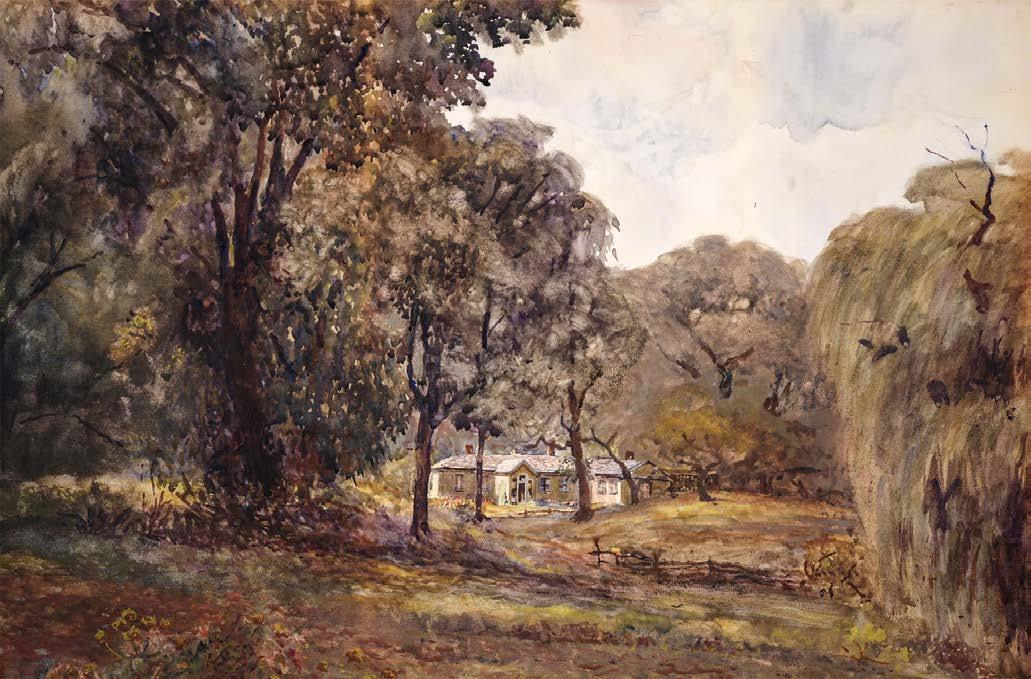
effected by the exchange of Indigenous Six Nations land to Pilkington.
Why would the Six Nations underwrite this transaction as a gift to Ann Claus?
That story starts much earlier and with Ann’s father, Sir William Johnson, who was responsible for negotiating the historic Treaty of Niagara in 1763.
This treaty between the Crown and 24 First Nations — with over 2,000 Indigenous signatories — included acceptance of the Royal Proclamation of 1763 which set the constitutional structure for the negotiation of treaties with the Indigenous inhabitants of large sections of Canada.
The proclamation legally defined the North American interior west of the Appalachian Mountains as a vast Indigenous reserve, a fact which significantly contributed to the unrest amongst the land-hungry and moneyed interest in the Thirteen Colonies, fuel that lead to the Revolutionary War.
Johnson was seen by Indigenous peoples as a friend and ally.
So too, did Ann’s husband, Col. Daniel Claus, through his role as deputy superintendent of Indian Affairs, in his words and
deeds establish a similar reputation amongst the Six Nations as a “friend and ally.”
In the culture of the Six Nations, women were the shepherds (very loosely read, “owners”) of the land and held, at least, an equal status to their men, it would be seen as reasonable and expected that a gift of land to the daughter of Johnson and widow of Claus be given in appreciation of the service given their people by her men.
And, as an aside, please note that no Indigenous peoples have traditionally entertained the concept of land ownership.
It was a European notion that the earth could be chopped into small bits and “owned” by an individual, company or nation.
For the Indigenous people, a geographic territory was the space required to support the tribal community and cultivated land was apportioned accounting to the yield (grown and hunted) necessary to feed and house their families.
Thus, four acres within the context of late 18thcentury Niagara old-growth forest and meadows, would be seen by the Six Nations as a very generous allotment for a single family.
The first house on this property, likely a brick Georgian, which was lost during the American burning of Niagara during their withdrawal in 1813.
However, Ann’s son, William Claus — who also served as deputy superintendent of Indian Affairs in the family tradition — undertook to rebuild the family’s home on this property in 1816 and 1817.
Now, the long, rambling house you see today is a product of seven separate builds — six in the 19th century and one in the late 20th century.
So, let’s follow the evolution of the dwelling over time.
It is my belief that William Claus’ original vision was to create a five bay, single storey with sleeping loft above, Regency Cottage but, for reasons unknown today, elected to do this in two separate builds.
Westerly portion of the cottage, constructed of brick was completed and occupied by William and his wife, Catherine, in 1816 presenting an asymmetrical three-bay facade with the entry door in the easterly bay.
The following year, 1817, the eastern portion
of the cottage, again using brick, was built and resulted in a five-bay presentation with the main entry slightly off-centre (to the east) under a uninterrupted hip roof.
Although constructed of different materials, in 1817 the Claus house facade would have looked similar to the circa 1817 J. Butler House, now located at 285 Simcoe St.
Then, in 1820, William expanded the footprint of the house to the rear, by adding an extension which likely housed a separated kitchen.
While William passed away in 1826, his wife, Catherine, was responsible for the next expansion of the house sometime during the years of 1835 and 1840 when a northerly wing was added possibly to increase main floor bedroom space.
And, while this was the first wood framed addition, she followed her late husband’s practice of coating the exterior with incised stucco to unify the presentation.
By 1850 the title of the property had passed to Walter H. Dickson and, under his auspice, an addition to the west was built — again, wood framed and coated with incised stucco.
Catherine Lyons (nee Claus) bought the property from Dickson in 1860 and, circa 1870, caused the last significant 19thcentury wood-framed, incised, stucco-cladded southern wing — projecting towards King Street — to be built.
From the 1878 sale of the property by Lyons’ grandsons to Thomas Ince, the footprint of the house remained stable — although there were likely renovations that altered the house’s elements, interior layout and finish components by various owners — until the 1990’s when a rear gallery was added along the south side of the building.
Just like the house, the landscape transitioned from old growth Carolinian forest to the more cultivated woodland seen in Owen Staples’ “The Wilderness” 1911 painting with featured planted trees and shrubs spotted here and there. Since that point, second growth from the original forest has reclaimed much of the property.
The Niagara Foundation has pledged to “preserve the significant attributes of the land and buildings comprising the Wilderness” and, based on that organization’s exemplary work in the past, I have no doubt they shall achieve glowing success in this endeavour.
That said, the foundation will require active support from the citizens of our fair town and I’d urge everyone to contribute, in any way they can, to underwrite that success.
Your children and grandchildren will thank you for it.
In closing, let me ask: did you ever wonder why William Street deadends at Regent?
You can thank Ince, who owned the property from 1878 to 1881 and managed to secure the patent for the unopened William Street road allowance, thereby ensuring the original lands remained intact.
Brian Marshall is a NOTL realtor, author and expert consultant on architectural design, restoration and heritage.

The Wilderness, depicted in this 1911 painting by Owen Staples, is a significant part of Niagara-on-the-Lake’s cultural heritage landscape, writes columnist Brian Marshall. TORONTO PUBLIC LIBRARY DIGITAL ARCHIVES
Builders should follow lead of Centennial Homes
Dear editor:
I’d like to call on the members of Niagara-onthe-Lake’s home building community to match, or exceed, the actions of a NOTL-based builder, Centennial Homes.
The company and its sub trades have announced the donation to Habitat for Humanity Niagara of four townhouse units in Thorold South.

Clearly we have the financial horsepower here in town to rise to the occasion. Names such as Gatta
Homes, Solmar Development Group and Hummel Properties immediately


spring to mind as movers and shakers to form a group, with others if required, to head and execute this worthy and rewarding endeavour.
Perhaps as support the town could donate a portion of its surplus land to such a project.
Let’s hear what people and builders think of this idea.
Samuel Young NOTL
Litter and poor communication, we can do better
Dear editor:
The announcement last week about the province spending $6.8 million to improve public transit across Niagara Region is, of course, welcome news.
Now, can some of that be put to improving train travel, signage and cleaning up the debris along the rail corridor?
I used the GO train from Niagara Falls to Union Station on April 20 and was excited that such a service was available so my husband did not have to drive me to Pearson airport from where I travelled to the U.K.
However, those feelings quickly dissipated due to the following:
• The train does not advance to the charming sta-
tion house in Niagara Falls but stops roughly 200 yards away from where people are waiting. There is no signage to indicate the train will not pull up to the station, which requires travellers to figure it out independently and then run for the train at the last minute.
• The train that day brought a vast number of visitors to Niagara Falls (from Toronto, I assume). My husband noted that if he had been a tourist on that train and left to scramble along a litterstrewn narrow pathway (with no signage or building in sight), he would have been horrified as to what kind of place he had come to visit. Both of us have travelled extensively in
Europe by rail and public transit and even in the smallest of towns we have never encountered anything like this.
• According to the published GO train schedules, the departure time for this train should have been 12:04 p.m., but the announced departure by train staff indicated it was 11:58, making me wonder if everyone got on the train as intended. The only other train to Union Station that day was in the evening.
• As the train pulled out of Niagara Falls heading to St. Catharines, the rail corridor made me ashamed. This is not what Canada should look like. The debris strewn everywhere was disgusting. Trash from
many impromptu homeless encampments (which is an ongoing problem beyond public transportation), to blown-in litter, to the dumping of tires, appliances, mattresses and plastic everywhere was unreal.
This is not only unsightly, but harmful to wildlife and ground water.
I just helped organize an Earth Day event in Niagara-on-the-Lake so what I saw through the train window was extremely distressing. We all need to do better.
Young and old, Niagara citizens need to care about the environment and the health and appearance of our towns and cities.
Lidija Biro NOTL
Let’s have an informed and serious political discussion
Dear editor:
While perusing vinyl flooring recently at a big-box store I innocently asked the salesperson if any flooring was manufactured in Canada.
He immediately responded that since Justin Trudeau and the Liberals came to power nothing is produced in Canada any more.
I did not respond to such a viewpoint. But it did occur to me that he represented a large segment of the population that gathers information from media outlets which love “sound bite” news or from social platforms which recognize the viewpoints of its followers by adding comments from posters who legitimize the opinion as fact.
How does one persuade this population that there is a reason we once again have become a raw material economy and it has nothing to do with Trudeau or former PM Stephen Harper?
The election of 1988 saw Brian Mulroney’s Progressive Conservatives promoting free trade with the United States. It was opposed by Jean Chretien and the Liberals.
It was a fierce and nasty campaign that eventually was won by the Conservatives and, while a success, the next step to a globalization movement was problematic.
Small manufacturing companies could not compete without protective tariffs and thus began a
hollowing out of hundreds of such companies. (Since I was a customs officer at the time I knew the tariff system and its impact.)
The West was to dominate the tech and communication sector and therefore all would benefit from cheap imports from China and Korea.
Unfortunately China did not get the message and developed its own tech expertise, leaving the U.S. and Canada to export billions in currency to purchase cheap goods from Vietnam, Cambodia, Korea and China.
As Canadians we need to be better informed and we need the three political parties to stop the blame game and start developing a strat-
egy to increase the incomes of all Canadians.
Both Joe Biden and Donald Trump have said the U.S. will eviscerate the free trade agreements if elected and introduce protective, widespread tariff policies. Are Canadians only going to be choppers of wood and drawers of water or can we start our own selective protective tariff system to encourage more home production?
The next election will be interesting and I hope it will be one in which all parties recognize that we have a problem and have a serious discussion as opposed to: ”The country is broken blah blah blah.”
Michael Eagen NOTL






Centennial Homes has donated four townhouse units.

Search and rescue open house shines a light on safety
Julia Sacco
The Lake Report
When it comes to being part of a search and rescue team, Randy Klaassen says it’s all about keeping your eyes peeled for the people you’re trying to help and staying focused — even as you’re flying in a compact airplane from 1964.
“It’s not for everybody. Partly the confined space, partly flying,” Klaassen said, as he showed off the plane and its individual barf bags stowed behind the plane’s seats.
Klaassen is an active volunteer and search coordinator with the Civil Air Search and Rescue Association of Niagara and was at the Niagara District Airport on Saturday for an open house all about sharing safety tips with the Niagara-on-theLake community.
The open house, which ran from 9 a.m. to 4 p.m., was hosted by the search and rescue association of
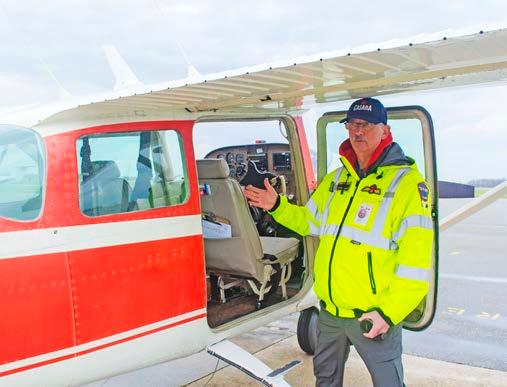
Niagara along with South Shore Search and Rescue and featured tours and demonstrations throughout the open house.
Klaassen took The Lake Report through a short tour of some of the rescue vehicles and equipment that the group uses during a search.
He explained the role of some volunteers who have to keep an eye out for those
being rescued or located.
“Your nose is right up against the window and you’re looking sideways. Do that going down the QEW at 120, because that’s the speed we’re doing. Then tell me what’s down there in the ditch,” Klaassen said.
Above anything, Klaassen urged safety during the open house, giving visitors tips on how to safely explore the outdoors.
“Water safety has to be key,” he said, adding that of the ten callouts last year, five were marine calls.
Wearing a lifejacket, preferably in a bright, visible colour, is important when boating or swimming.
The risk and attention to detail that comes with being a search and rescue volunteer attracts a crowd of dedicated and generous people.
One of the newest recruits, Peter Jennings, signed up to volunteer only a few weeks ago after hearing Klaassen speak at the PROBUS club in St. Catharines.
“I have what I think (search and rescue) is looking for.,” Jennings told The Lake Report. “I have been flying and sailing and therefore I feel like I owe it back to people to be on the other side and help when I’m not out there.”
For new volunteers like him, training begins in the winter to prepare
volunteers for the summer season.
Nancy Briggs, a new volunteer, will begin her first season with South Shore Search and Rescue this summer.
Already a fisher, training for water rescue came easily to her.
“It was familiar, with the boat and docking and leaving the dock,” she said.
Cathy Buis, a volunteer with the search and rescue association, has been helping out for around six years.
Buis got into volunteering as a way of using her skills to give back to the community,
“One of the (volunteers) is a friend of mine, we play tennis together. My background is in nursing and she said ‘I think this might be a good fit for you,’” Buis told The Lake Report.
She said that applying her training and skills to the real world has been the most rewarding part of her years with the organization.
“All of your hard work and practice has now come to and at the end, you hope that you have a good outcome or at least closure for families,” she said.
Civil Air Search and Rescue Association and South Shore Search & Rescue are non-profit charities that rely on these dedicated volunteers and community donations to function.
“Both of us are nonprofits, (South Shore Search & Rescue) in particular don’t get any extra funding,” Klaassen said.
The operation itself is expensive, using numerous GPS tools and consistently having to update aircraft technology.
ADS-B, an aviation surveillance technology that will be added to the aircraft, gives pilots satellite weather tracking and navigation.
“It has saved lives already with searches, it’s a great technology but it is expensive,” Klaassen said.
juliasacco@niagaranow.com


We could tell you what makes Amica Stoney Creek different from other senior living residences. But we’d rather show you. Visit our exclusive residence and see how life here can be exactly what you want, with professional, personalized care that’s always there if you need it.

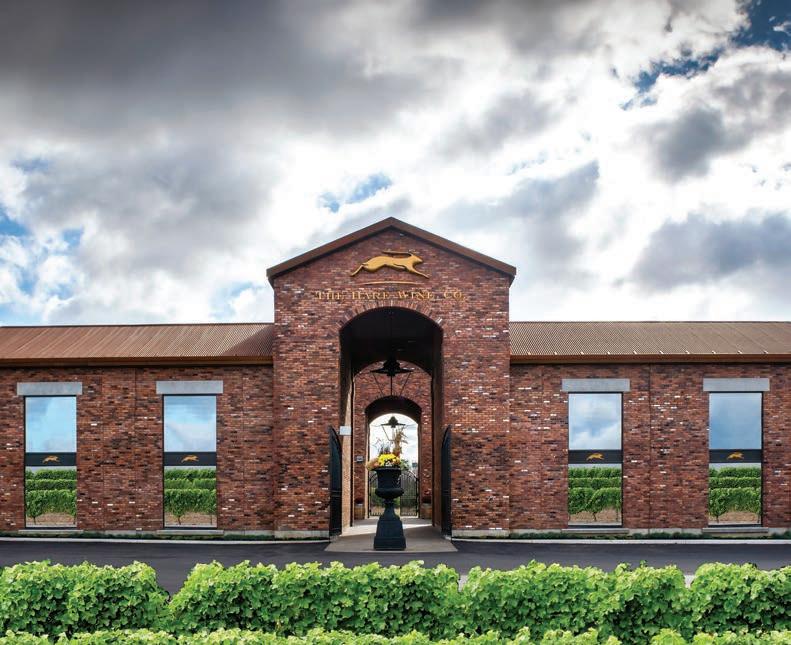
Join us for a special Mother’s Day brunch buffet, “Where Moms are Queens,” catered by Noble Restaurant at the Prince of Wales Hotel. Treat Mom to a delightful experience with a complimentary glass of our exquisite Hare Series Sparkling Rosé. Enjoy a variety of delicious dishes including antipasto, salads, classic breakfast favourites, enticing entrées, and decadent desserts. It’s a day to honour and cherish the queens in our lives with good food and great company.

Half of last year’s search and rescue calls were related to water safety, Randy Klaassen said during Saturday’s search and rescue open house. JULIA SACCO

Council reinstates rental licence despite record of non-compliance
Evan Loree The Lake Report
A bed and breakfast owner in Niagara-on-theLake is frustrated with an “antagonistic bureaucracy” after having her permit revoked by the town.
Resident Marlene Gallyot on Tuesday night asked council to overturn a decision by staff to revoke her short-term rental licence.
After some debate, council decided to reinstate Gallyot’s licence effective June 1.
Town bylaw officer April Smith told Council Gallyot “has a history of contravention with other town bylaws,” noting she has hosted weddings at her property on Line 3 Road in violation of the town’s short-term rental regulations.
The owner would need to rezone the property or apply for an event permit six weeks ahead of weddings if she wanted to continue hosting them at the property.
When the vote was called, Coun. Gary Burroughs was the only holdout.
“I’m not clear that you’re actually intending to not do weddings,” Burroughs told Gallyot.
Burroughs said he was not

Marlene Gallyot got her short-term rental licence back from council, despite a record of non-compliance with bylaws. Only Coun. Gary Burroughs was opposed. EVAN LOREE
sure if the solution was to rezone the land as commercial so Gallyot could continue using it as a wedding venue.
Smith said allowing Gallyot the right to keep hosting weddings on her property would open up a “can of worms” for other short-term rental owners to start hosting big events on their properties. Burroughs agreed. “My endeavours to use my property for small ceremonies stem from the challenges of finding suitable employment in the region,” Gallyot said,

adding she hasn’t been able to find work in Niagara since leaving a job in Markham in February 2023.
She relies on the property and her services as a wedding officiant to help supplement her income, she said.
“It’s a big hammer to put somebody out of business,” Coun. Erwin Wiens said.
He said he’d prefer to help Gallyot find a way to operate within the town’s rules.
After a tie vote on whether to permit the resident’s operations, Coun

Nick Ruller suggested the eight present councillors grant the permit effective July 1, so there were some consequences for her.
Coun. Wendy Cheropita, who was in favour of granting the permit, said Ruller’s intentions were still “heavy handed.”
“Why delay it for a couple of months just to slap her hand more?”
“I think we should give people the benefit of the doubt,” she added.
After some discussion, they agreed to split the difference and reinstate Gallyot’s licence on June 1.
Last issue:
Category: HELPING THE PLANET

Meerkats aren’t felines. They’re in the family named for these cobra fighters. This week’s riddle is “Jeopardy!” style. Category: THE ANIMAL KINGDOM The Provincial Service Officer will be visiting the Thorold Legion, Branch 17, on June 5, 6 and 7
contact Branch 124, Niagara-on-the-Lake Legion office at 905-468-2353 | legion124@gmail.com





Clue: Carlsberg, a fine beer from this country, is helping out with the plastic problem by gluing its cans together.
Answer: What is Denmark?
Answered first by: Bill Hamilton
Also answered correctly (in order) by: Jane Morris, Lynda Collet, Claudia Grimwood, Bob Wheatley, Catherine Clarke, Susan Dewar, Mike Gander, Pam Dowling, Kathy Humphries, Jim Dandy, Wade Durling, Katie Reimer, Sylvia Wiens, Sheila Meloche, Sue Rautenberg, Tuija Johansson, Nancy Rocca, Edna Groff, Marla Percy, Howard Jones, David Spencer, Margie Enns
Email answers to editor@niagaranow.com, with your name, for a chance to win a $25 Irish Harp Pub gift card every week. (Subject line: Riddle me this)
*REMEMBER TO PUT “WHAT IS” FOR JEOPARDY QUESTIONS!
Love games? Join us for fun events every week at the Irish Harp Pub. Details at www.theirishharppub.com




Jazz at the Hare Wine Co.
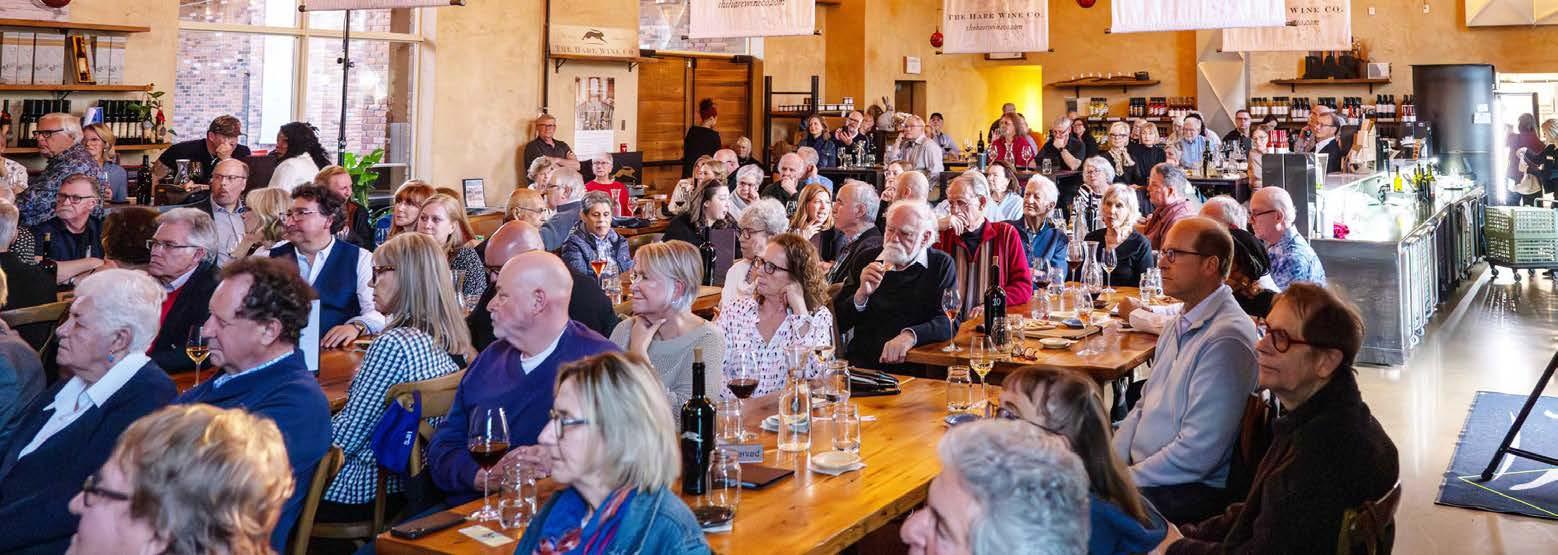
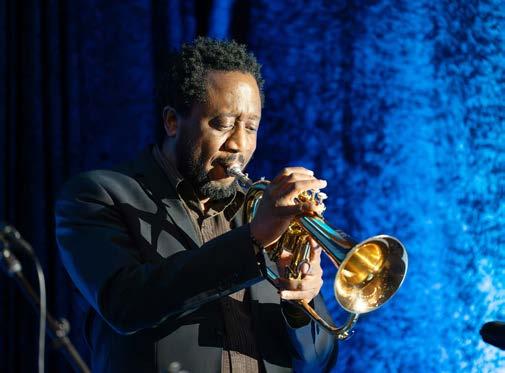


Shaw Festival to use federal money to promote human connections
Richard Wright
Local Journalism Initiative
The Lake Report
Humans. There are more of us than ever, yet it seems like we’re more disconnected than ever before.
The internet, automated answering machines, ATMs, self-serve gas stations, check-out lines and social media — they all help reduce old-fashioned, inperson connections.
That’s why the Shaw Festival wants to bring people back together, after the distancing nightmare of COVID-19 and the general sense of disconnectedness among us, and it may have the tool to do so — in-yourface communication.
Enter All.Together.Now — don’t forget the dots.
“If you think about it, it is three separate words but all connected in one phrase,” said executive director Tim Jennings.
After years of lobbying government for the funds to fully launch the campaign, the festival is as close as it’s been since before TikTok became a household name.
But there’s a catch: Jagmeet Singh and the NDP

have to hold up their end of the deal and prop up the Liberal government’s 2024 budget.
As of now, a $15 million promise to the Shaw hinges on that green light.
“The budget has not been passed, but we are named in it,” Jennings said in an interview. “We are pretty excited about that. The $15 million in the 2024 federal budget is specifically for some capital projects.”
The biggest of those capital
projects is All.Together.Now.
As Jennings details, it is a campaign that aims to create spaces and mindsets for in-person interactive communication, learning and fun.
The hope is to use the arts to deepen human connection and reduce social isolation.
“Lots of people are doing it in the sports world and we think there is room for the arts to do that as well,” he said.
The more specific question Jennings and his team asked themselves is: how can live arts increase empathy and reduce social isolation?
“We need to get people in rooms together and out of the silos such as social media,” he said. “How can we use art to help change that conversation and make people talk to each other again in ways that are respectful and helpful and move the conversation forward?”
Shaw wants to use the money to create classrooms and open spaces for things like artist-led yoga and exercise classes for seniors.
Other ideas include book clubs and gardening groups, but the festival is also thinking about creating artist and student housing.
Shaw works with Niagarabased students interested in the theatre/arts and where housing already-local students won’t figure into the plans, there is room to help theatre students from universities with whom the festival partners.
“Those students can now spend weeks here (with the proper housing) and we can train with them.”
Jennings said he understands many people — for reasons that could include age, ability, mobility, etc. — still favour online activities.
He said he feels the Shaw is ahead of the game when it comes to understanding how to deliver that and will continue to do so with or without the federal cash.
“(During the pandemic) we created these spaces to help people stay in physical shape and to connect with each other,” he said.
“From that, it created online forums and rooms where they also talked to each other. But now that we are out of that (social isolation) era and we don’t want to lose that ability to connect, so we still run them.”
He noted that some of the money for All.Together.Now will go toward the productions people see on stage, which will enhance performances for theatre lovers.
Afterall, he said, theatre is an interactive medium — in a way, its own form of social connection.
“We think that theatre is generally about stories on the stage where, in an empathetic way, you (the audience) are sort of stepping into the shoes of the various people on stage,” he said.
“You are trying to see what the story is through their eyes. And so, when we put a room full of people together who see that story — and if the stories are good — they are holding up both sides of the argument.”
That, he added, is the whole point: “We shouldn’t be preaching. We should be engaging.”
wright@niagaranow.com
Top: A group of people, including Lord Mayor Gary Zalepa, take in a jazz show at the Hare Wine Co. to celebate International Jazz Day on Monday. The show was titled “Latin Jazz” featuring the Laura Fernandez Trio. Bottom, from left: Alexander Brown on trumpet, Don Naduriak on piano, Laura Fernandez sings a tune. DAVE VAN DE LAAR
The Shaw Festival is hoping that a $15 million promise from the federal government comes to fruition to support its new All.Together.Now campaign. RICHARD WRIGHT

Pottery expert offering classes at old Virgil school
Linda Fritz The Lake Report
In the past few years, two former school buildings in Niagara-on-the-Lake have been repurposed to make way for a day care centre, bicycle shop for migrant workers, a place of worship and artist studios.
The former Laura Secord School in Queenston is the workplace for artists Sharon Okun and Adam Markovic while the old elementary school in Virgil houses Belisle Pottery, owned and operated by Valerie Belisle.
As you enter the pottery you may hear a discussion about whether it’s time to run a glaze fire or perhaps a bisque fire. A visitor can only hope for an explanation.
Belisle, a franco-Ontarian born and raised in Ottawa, started out in the hospitality industry.
She studied culinary arts and business management, and her work took her to Europe, Montreal and Newfoundland.
She eventually arrived in Niagara, where she worked

at Pearl Morissette, a Jordan winery and restaurant that aims to reflect “the European ideal of destination dining in the heart of agriculture.”
During her career as a sommelier and front-ofhouse manager, Belisle met a potter who created dishes for one of the restaurants she worked at.
Stunned at the quality of the items, she asked the potter to teach her. Basma Osama of Ceramik B in Montreal became the first of many mentors who
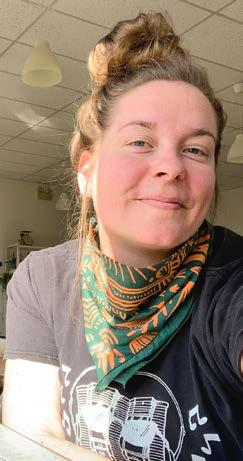
helped make her the artist she is today.
She decided she wanted to make her own pottery and started slowly, with a wheel in her basement. Her goal was to sell her products online.
Eventually she wanted to do more but needed a kiln, so she started looking for a place that had the space to handle one, as well as a wheel and the other tools she needed. The old Virgil school proved ideal.
The space needed work. Walls had to be removed,

new shelves had to be installed. Belisle and other artists, including Okun and Markovic, built a table that was high enough and wide enough to accommodate her needs.
Once she was established in the building, Belisle began to take on students. She offers open scheduling whereby 16 students purchase eight classes.
They have 12 weeks to complete the course and can choose the days they attend.
The students have varying
levels of expertise, which isn’t a problem. It’s a unique and inclusive experience, Belisle says.
She is pleased that they tend to choose the same day and time each week.
Community, it turns out, is very important. Many have returned for more training.
Indeed, Markovic is one of her former students.
Along with his paintings and furniture he is now creating his own dinner services.
Belisle’s students work with a potter’s wheel while
her assistant, Audrey Wall, handles classes in another form, called hand building. It is similar to working with play dough. Students sculpt, roll and shape their work with their hands. A class of Grade 12 students from Lakeshore Catholic High School in Port Colborne were recently involved in creating handbuilt objects.
Belisle’s work will soon be available in area shops such as Honey Fields.
Located near Line 8 and Four Mile Creek Road, the farm shop also sells its own honey in a variety of styles and flavours.
Belisle is now working full-time in her pottery business and because of the local demand she has been so busy she hasn’t been able to plan how to provide an experience for the tourist market.
She says the NOTL community has given her so much and she wants to spend her time giving back.
• Belisle Pottery is located at the old Virgil schoolhouse, in classroom #2 at 1665 Four Mile Creek Rd. Call 514994-5741 for hours.


















































Valerie Belisle now offers pottery classes in her studio in the old Virgil elementary school. LINDA FRITZ











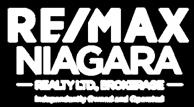



Julia Sacco The Lake Report
Sue Rumsey is a Toronto Maple Leafs fan through and through and she has the front lawn to prove it.
Rumsey’s popular “Go Leafs Go” lawn signage on Niagara Stone Road in Virgil is back for this year’s Stanley Cup playoffs but with a new, playful addition.
The Leafs are going head-to-head against the Boston Bruins (again) and had a must-win game 5 on Tuesday night.
They pulled off a 2-1 victory in overtime and live
to fight again on Thursday night at home, down three games to two.
Bruins captain Brad Marchand, nicknamed “the rat” by some, has forever been a headache for the Leafs and someone suggested that Rumsey “had to add something about ‘the rat trap.’ “
So, this year’s sign got a makeover on Monday morning, adding in the phrase “Set the 63 Rat Trap,” referencing Marchand’s sweater number.
The updated sign plays off of the friendly rivalry among friends and neighbours who are Bruins

fans, Rumsey said.
And it seems to be a big hit, as countless drivers honked their support while Rumsey and her chocolate labrador, Bauer, posed for a photo outside her home on Monday.
Rumsey remains confident she’ll have no reason to take the signs down any time soon.
“Call me on Sunday morning because I know we are going to win the next three games no matter what,” she predicted. Well, the Leafs took the first one. We’ll see what happens Thursday night.
juliasacco@niagaranow.com
Tania Fera-VanGent Special to The Lake Report
The Niagara-on-the-Lake Hockey Association honoured players and volunteers at its annual awards ceremony and coaches appreciation gathering Monday evening.
“Our memorial awards are special because they are connected to people in our hockey community who always displayed a true love and dedication to the game and their names are carried on through
the memorial awards,” association president Peter Flynn told the audience.
Anthony Felice was named Volunteer of the Year and Flynn acknowledged the countless people who donate hundreds of hours to give kids a positive hockey experience.
Devon Neudorf, coach of the U18 rep team, earned the Kocsis/Glauser Memorial Award for coach of the year, while Lucas Pillitteri received the Mike Moore Goalie Award.
ary studies in business,
Scholarship Award.
Find more photos at niagaranow.com








Ben Bayne won the Joel Murray Player Dedication Award and U18 rep team captain Marco Gruosso took home the Jamie Froese Memorial Award. The association’s newest honour, the Virgil Business Association Scholarship, for a player pursuing post-second-
was presented to Nick Munera. Braden Grealy received the James Berg
Anthony Felice, Braden Grealy, Nick Munera, Lucas Pillitteri, Marco Gruosso, Ben Bayne, Devon Neudorf were all given various awards. DAVE VAN DE LAAR
Sue Rumsey is serious about the Toronto Maple Leafs, as evidenced by her yard display.




Growers hope April frost won’t hurt crops
Richard Wright Local Journalism Initiative The Lake Report
The dreaded April frost came last week but Niagaraon-the-Lake stone fruit and grape growers are confident all is not lost.
“We don’t think we have much damage,” said Scott MacSween, owner of NOTL’s MacSween Farms, which produces fruits such as apricots, cherries and nectaries. “It was touch and go but we still expect a full crop.”
Area farmers woke up to frost on Thursday, April 25 and feared the worst. The following day, overnight temperatures hovered right around zero, though frost was evident in some areas of NOTL on Friday morning.
An early bloom two weeks ago set the stage for concern. The normal time for stone fruits to flower is the end of April or early May.
However, a mild January helped kickstart fruit trees into blooming early, putting them at risk being killed by sustained overnight subzero temperatures, which are all too common at this
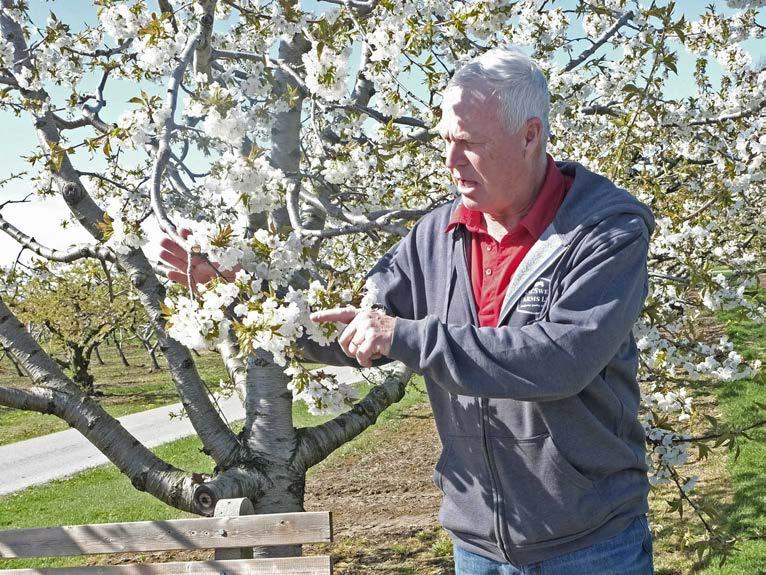
time of the year.
MacSween was in close contact with a number of other stone fruit farmers in NOTL over the course of the two days and reports they too believe it could have been a lot worse.
“I am optimistic,” he said.
“If it would have been
minus 3 (on April 26), I would have been confident to say that we lost around 50 per cent. But we weren’t at minus 3. It was zero.”
Confidence aside, the big sigh of relief won’t come for another week or so, MacSween said.
Stone fruit farmers typi-
cally overproduce by about 70 per cent of their fruit and prune off damaged or dead foliage starting in June.
So, even if 30 to 40 per cent of the crop was damaged or killed by this week’s temperatures, it would still be considered a good crop.
NOTL vineyards manage to survive April frost
Continued from Front Page
Not only was it very cold for two nights, but the cold lasted for an extended period of time.
“Often it’s at its worst between 3:30 and 5:30 a.m., but in some cases the wind machines had to start up at 9:30 in the evening,” said Oppenlaender. “Those were two long nights.”
“On Thursday night, it just sounded like the apocalypse. Every single windmill was running at full blast,” said Bill Redelmeier, proprietor of Southbrook Vineyards.
It was loud, but Redelemeier said he was happy to hear the fans because it meant growers were doing what they needed to.
“We escaped the worst of it, there may be some sporadic damage here and there, but nothing to really worry about,” said Oppenlaender. “Without the wind machines the damage would have been extensive. Thank god for the wind machines, the technology really helps us.”
The fans are expensive to buy, and to run. “They cost close to $75,000, and when we run them, they cost $500 each per night,” said Redelmeier. “It was a
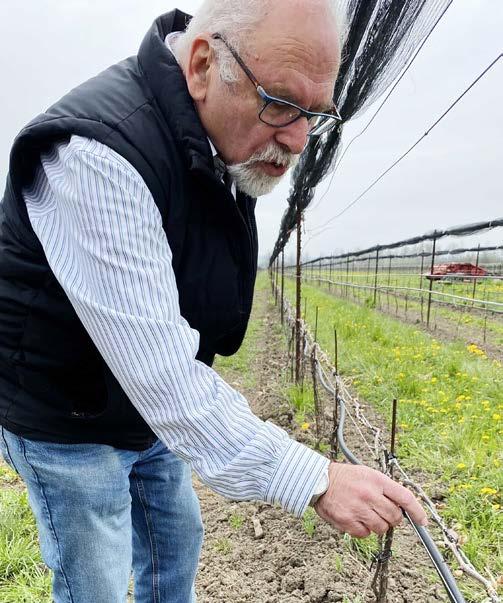
very expensive night, but better than the alternative,” explained Oppenlaender.
Early bud break is a double edged sword. On one hand, it increases the risk of frost damage, and on the other, it’s a good headstart to the season.
“If we get by without frost damage, the early start is beneficial, it gives us a longer growing season and more time for the grapes to ripen,” said Oppenlaender. Redelmeier is at least cautiously optimistic about
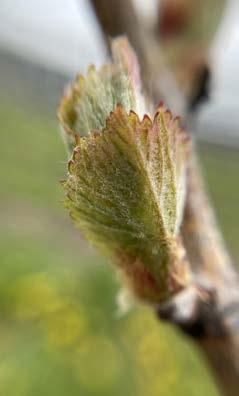
the next few weeks, in part because of the biodynamic calendar he follows: “Traditionally here, the last frost is on the second full moon of spring, which was last week.”
The date for that full moon was April 23, which is earlier than most years. It can be as late as May 24, depending on the year.
“We’ve had the date of the second full moon of spring for this year written on a whiteboard since before Christmas, so we were expecting a
frost this past week. And that’s what happened. So in theory, hopefully we’ll be just about finished, and we’ll be okay,” said Redelmeier.
As the tiny leaves on the vines continue to unfurl and grow into May, transforming the vineyards from their winter grey to vibrant green, it’s a waiting game on the weather.
“It could still get cold,” said Oppenlaender, adding “these extreme weather events seem to be occurring all the time now.”
Left: Bill Redelmeier checks the buds on his Chardonnay vines at Southbrook.
Above: New leaves emerge from the buds on the vine. DON REYNOLDS
Scott MacSween, owner of MacSween Farms in NOTL, shows off his healthy cherry blooms. The stone fruit producer went through some nervous days April 25 and 26 when frost threatened his entire crop. RICHARD WRIGHT
Hidden Gem on Lake Ontario: Discovering Port Weller East
In the Niagara region, nestled along the shores of Lake Ontario, lies a hidden gem that many insiders and outsiders have yet to explore: Port Weller East. This charming neighbourhood boasts a wealth of attractions and amenities that cater to the savvy residents, many who have been there for decades. At the heart of Port Weller East is Jones Beach, a stretch of shoreline that offers breathtaking views of Lake Ontario’s shimmering waters. The marina, located nearby, provides access to all types of boaters. Endless water adventures, from kite surfing
to kayaking are enjoyed by residents and visitors along with its stunning sunsets.
Port Weller East boasts a vibrant community life. Residents enjoy easy access to a variety of amenities, including restaurants, cozy pubs, supermarkets, and the convenience of Fairview Mall.
The Seaway Farms garden center is a haven for green thumbs, while nearby Old Town Niagara-on-the-Lake offers the region’s rich history and culture. The neighbourhood’s proximity provides several routes to the QEW helping commuters reach their destinations.
Despite its many attractions, Port Weller East remains a well-kept secret, characterized by its tranquil streets, friendly atmosphere, and well-maintained homes. Whether enjoying a leisurely stroll along the scenic canal or casting a line for fishing, Port Weller East offers endless opportunities to experience the natural beauty and laid-back charm of lakeside living.
In a region teeming with tourist hotspots, Port Weller East stands out as a hidden gem—a peaceful oasis on the shores of Lake Ontario, where beauty, tranquility, and community converge.
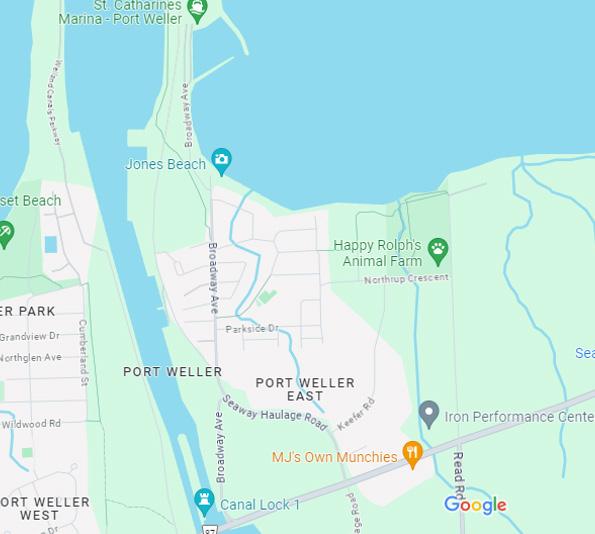
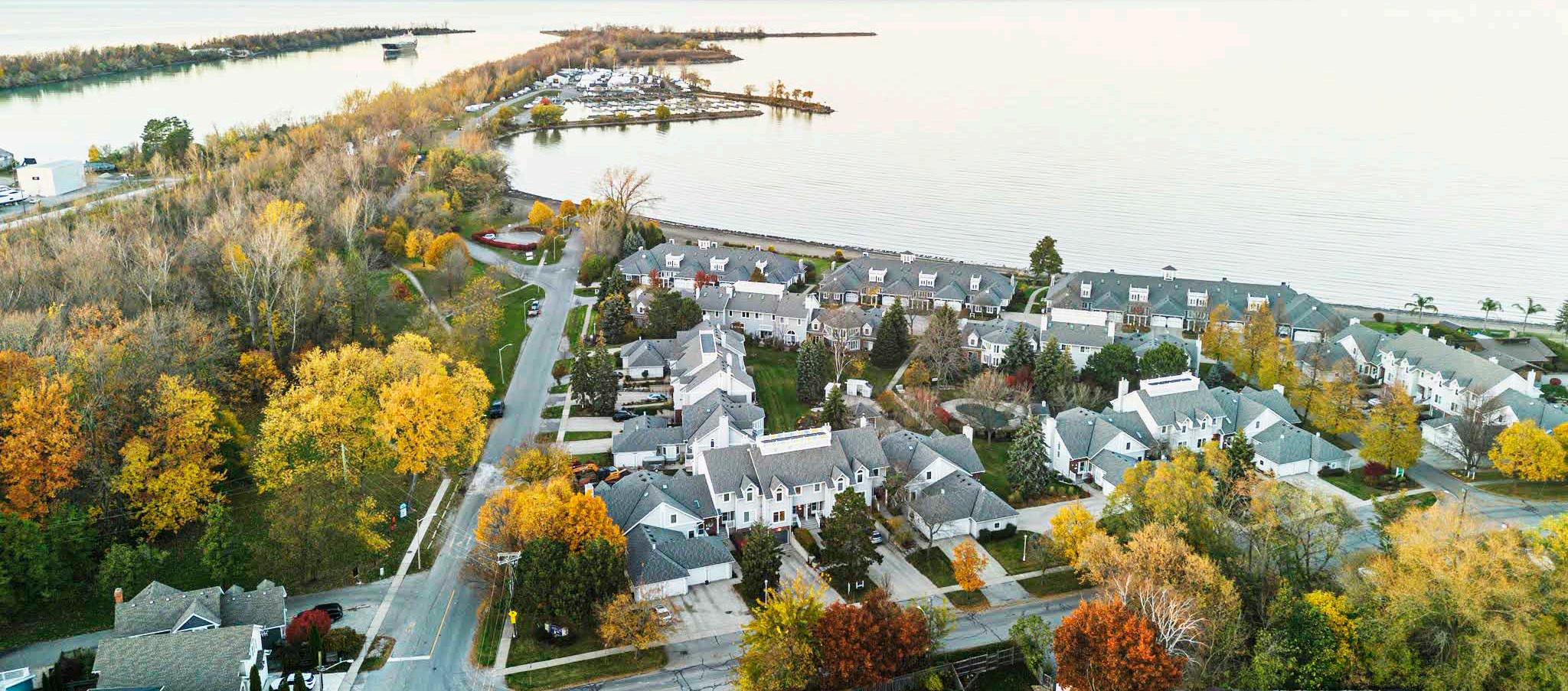

your
Steps



Port Weller East: A beach community on the NOTL side of the canal.

Have some fun







Julia Sacco
The Lake Report
The St. Davids Leos are gearing up to support the Lions of Canada Foundation of Dog Guides for the second year in a row with the Pet Valu Walk for Dog Guides at the St. Davids Lions Club.
Along with Leos president Maya Deuck, vice-president Hardi Patel has taken the reins to support the worthwhile cause again on May 26.
The walk, which Patel described as similar to the
Rankin Run, but with donations going to dog guides, isn’t the only thing the 16-year-olds have on their roster of plans for the club this year.
“We are trying to expand our social media a little bit more,” she said, adding that it will be an easy place to promote upcoming activities run by the Leos.
Along with the upcoming walk, the Leos will be hosting two dog washes at Virgil Pet Valu, the first on Saturday, May 11. Following the walk,

participants can help themselves to free hot dogs and drinks.
Donations will be collected in-person at the
Julia Sacco
The Lake Report
This Saturday is the last day to book a spot for Lady Lavender Floral’s Mother’s Day workshop on May 11.
The workshop, starting at noon at the Queenston Library, will feature a high tea and spring wreath-making session.

This unique way to spend Mother’s Day is led by Shannon Troupe, owner of Lady Lavender Florals and its sister company Tent & Table.
“We will start with a high tea,” Troupe said. “It’s a traditional high tea and everyone will have a selec-
tion of teas. Followed with a little tray of all kinds of foods.”
Following tea, Troupe will direct the group on how to put together a 14-inch wreath with several springinspired greens.
Branching out from event rentals into florals around 2020, Troupe used her background in business and passion for florals to launch a company of her own Originally, her focus was on weddings and big gather-
walk and online before and afterwards.
For updates, visit the Leos’ Instagram page, @ stdavidsleos.

ings, but she’s started organizing workshops around the Niagara region.
“I currently work out of a studio space in my home in Fort Erie, but we do a lot of our events mainly in Niagara-on-the-Lake,” she said.
To keep up to date with upcoming workshops, or to reserve your spot for Mother’s Day, visit ladylavenderfloral.ca/workshops.
The last day to reserve a spot is Saturday, May 4.


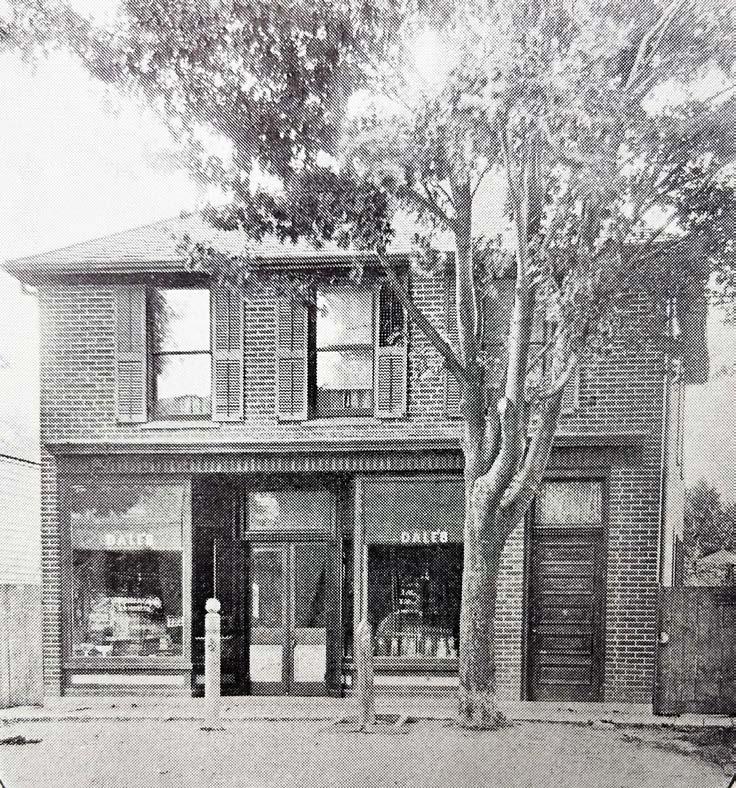
Dale’s Store
Recognize this building? It has a long history of serving up delicious treats. It is the Niagara Home Bakery building at 66 Queen St. The red brick structure, shown here in 1900, was built by Walter Campbell and is reputed to have been the pioneer ice cream business in town. Here, the widow, Girvin (later Mrs. Swift) sold homemade cake and ice cream in the 1890s. Mrs. Dale carried on the business at the turn of the century. After the First World War, the store became a bakery and confectionary, operated in succession by Mel Slingerland, James MacPhee (who added a soda fountain) and the Albrechtsen family, who bought the business in 1935.
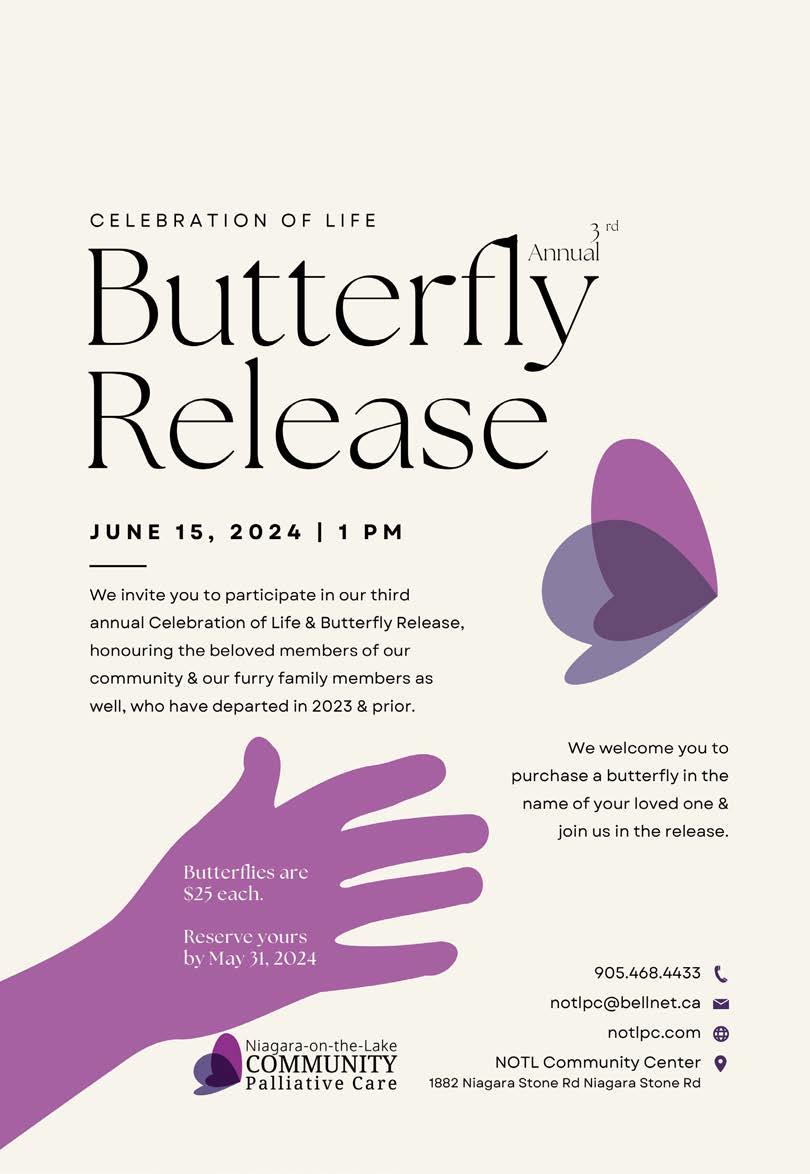

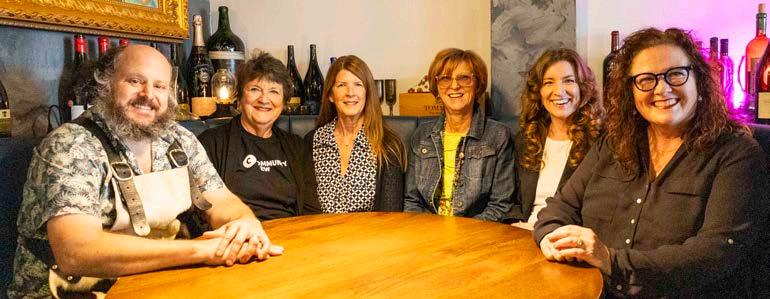
Bar Ruffino and friends help raise $10,000 for Community Crew
Richard Harley The Lake Report
It was a night of great wine and food that Community Crew volunteers and supporters won’t soon forget.
On April 23, Bar Ruffino, the newest addition to Ruffino’s Pasta Bar & Grill, hosted about 60 people for a night of wine and fun, sponsored by a long list of Niagara restaurants.
The goal was to raise funds for the organization’s lunch program, which feeds children from food insecure families in the Niagara region a healthy lunch once a week.
The program feeds more than 1,400 children weekly, in 33 different schools.
Altogether the party man-
aged to raise about $10,000. A bunch of Niagara businesses helped pitch in so they event could be donation only.
There was food from Ruffino’s and Yorkshire Pudding Inc., wine from Vineland, Ravine and Fielding estate wineries, plus from Crawford’s farm, spirits from Dillons, beer from the Exchange and non-alcholic drinks from Hendrik’s Independent.
“So we had everything covered right here in town,” said Community Crew’s fundraising manager Katy Herron.
The idea was dreamed up by Jane Locke and Bar Ruffino owner Ryan Crawford. She said the night was “almost informal,” but they still maxed out the capacity for the building.
“Food prices continue to rise. The needs continue to grow with food insecure children in the Niagara region. (Locke) sees it up close every week now packing lunches for us. And we’re not self-funded. And so events like this are perfect. When you can kind of combine a group of people who care about the community together,” Herron said.
“The biggest challenge is people don’t know these needs exist right here in our backyard. And they don’t know that we all the things that we do at Community Crew.”
Events like this one help more than just financially, but to also get the word out that people can donate and help out, too.
From left, Chef Ryan Crawford, owner of Bar Ruffino, Community Crew volunteers Jane Locke, Shari Hartwick, Bobbie Corcoran, fundraising manager Katy Herron and volunteer Pam Sterling. They helped raise $10K for the organization’s lunch program. RICHARD HARLEY

Celebrating Niagara’s Symphony Orchestra
SPONSORED
The Lake Report
Did you know? The Niagara Region has its very own, professional, symphony orchestra? Well, we do!
For the past 75 years, the Niagara Symphony Orchestra has provided countless hours of entertainment and education to our community. NSO concerts are incredibly varied and highlight different genres of music.
Come celebrate with the NSO, the culmination of their 75th Diamond Anniversary Season as Niagara’s Symphony Orchestra at a Gala tribute being staged at the worldfamous Jackson-Triggs Estate Winery on Sunday, July 14. Dinner commences at 5pm with the auctions beginning at 6:30pm. The concert begins at 7:30pm. Tickets for the Dinner & Concert are $225 + HST and to the Concert Only, $75 + HST.
Purchase your tickets before May 31 and be

entered in a draw to win tickets to the NSO’s 2024/25 concert season plus a backstage tour of the FirstOntario PAC. This momentous occasion will include an “Explore Your Senses Dinner,” complete with
bountiful wine, perfectly paired with five culinary stations in a self-discovery tour of the Jackson-Triggs estate. After dinner sit back and enjoy an unforgettable performance by the Niagara Symphony Orchestra in the beautiful
outdoor amphitheatre.
NSO Music Director Bradley Thachuk leads the NSO with guest artists, Jay Dref, whose rich and passionate voice was heard at The Classics of Rodgers & Hammerstein earlier in this anniversary season, and
internationally acclaimed violinist, Nikki Chooi.
Everyone is invited to participate in the Silent and Live Auctions. Concertgoers are encouraged to come early and enjoy a wine tasting flight and charcuterie available for
purchase. Stage actor Christopher Blake will act as auctioneer, who will be his usual entertaining self. Purchase your tickets now at niagarasymphony. com and enjoy this midsummer concert under the stars.
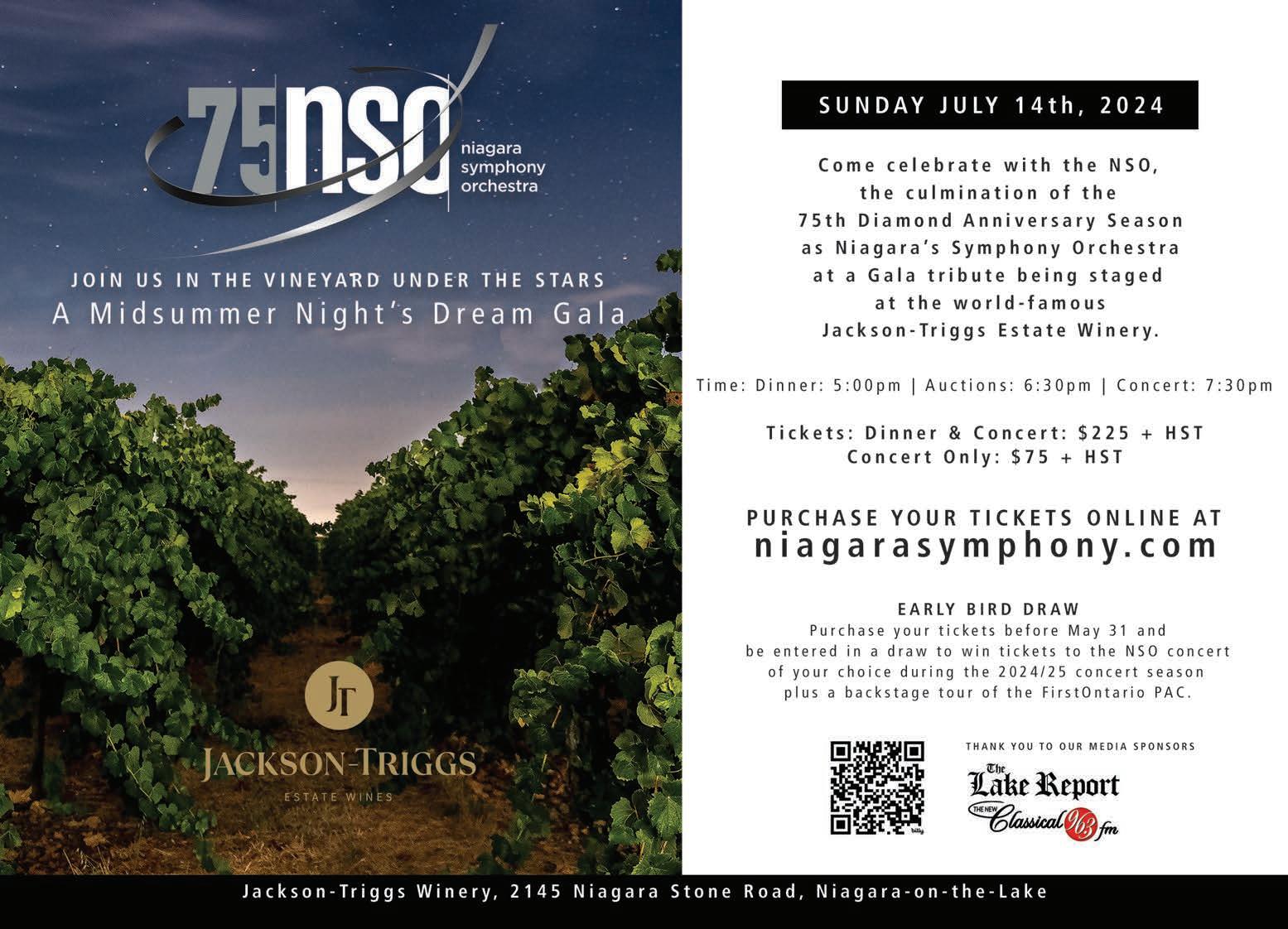
Niagara’s Symphony Orchestra will celebrate its 75th Diamond Anniversary gala at Jackson-Triggs Estate Winery on July 14. SUPPLIED

FEATURED



Time for tulips and other bulbs
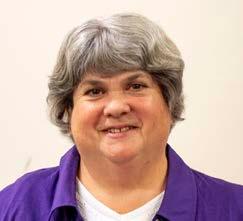

Joanne Young Columnist
We are now in prime bulb-blooming time. With the cooler weather, the flowers are lasting a bit longer.
All those bright colours sure catch the eyes and let you know that spring is here.
Many of the smaller bulbs such as snowdrops and crocus (planted closer to the surface) finished blooming.
The daffodils and grape hyacinths are still in full bloom and the tulips have just begun showing off their colours.
We still have the alliums, fritillarias, camassias and others yet to make their appearances.
Hopefully, we still have a long bloom period ahead of us.
So, once the bulbs have finished blooming, what happens to them next?
Usually, we just hack back the leaves to get them out of our way so that we can plant our annuals.
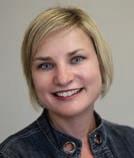
As I always say though, hacking is not a proper horticultural term, so don’t be too quick to get rid of the leaves.
After the bulb has bloomed, make sure you remove the seed head as soon as the petals have fallen.
The seed head is what’s left after the flower petals have dropped.
If the seed heads remain on the plant, all the plants energy will go in to ripening the seed.
For a bulb, though, you want all the energy (food) to go back into the bulb — making it ready for next year’s flowers.
When cutting off the seed head, remove the complete flower stem, right back down to the leaves.
This helps keep the plant looking tidier without a bunch of brown, dried stems sticking up.
Let the leaves remain there until they have completely turned yellow and have gone dormant.
The leaves, while still green, are still processing sunlight into food, through a process called photosynthesis.
So even though our purpose for growing the bulb is the flower, the leaves play a very important role of providing food for the bulb, ensuring that the bulb has everything it needs to have healthy blooms the following year.
As long as the leaves are green, the food is still in the leaf.
As soon as the leaves turn yellow that indicates that the food has now moved down back into the bulb.
It is also at this time the flower buds and leaves are set for the next season.
If the leaves are cut off prematurely it robs the bulb of the food that it needs resulting in smaller or no flowers for the next year.
The more food that the bulb receives, the bigger the flowers will be.
To help feed the bulb you can also be feeding after blooming with a fertilizer high in phosphorus such as bonemeal.
Most hardy bulbs (spring blooming bulbs) can be left in the same spot in the ground and will continue to come up year after year, giving you low maintenance, reliable flowers.
Sometimes even bulbs need a little help.
How often should you divide bulbs? That really depends on the flower.
As a rule, however, bulbs should be divided when they get so overcrowded that it’s noticeable.
As bulbs grow, they’ll put out little offshoot bulbs that cluster around them.
As these offshoots get bigger, the space that the bulbs have to grow starts to get too crowded, and the flowers stop blooming as
vigorously.
If a patch of flowering bulbs is producing mainly leaves but not as many flowers as it did in the past, it means it is time to divide.
This is likely to happen every three to five years.
When dividing bulb plants, it’s important to wait until the foliage dies back naturally.
The bulbs need the foliage to store up energy for next year’s growth.
Once the leaves have died, carefully dig up the bulbs with a shovel.
Each larger parent bulb should have several smaller child bulbs growing off it.
Gently pry off these child bulbs with your fingers.
Squeeze the parent bulb — if it’s not squishy, it is still healthy and can be replanted.
Replant your parent bulbs where they were and relocate your child bulbs to a new spot.
You can also store your new bulbs in a dark, cool, airy place until you’re ready to plant them again in the fall.
With just a little care, spring flowering bulbs can extend a month of interest in your garden year after year. Get out and enjoy the beauty that bulbs provide.
Joanne Young is a Niagara-on-theLake garden expert and coach. See her website at joanneyoung.ca.
Pauline Reimer Gibson Audiologist
Crocuses, tulips and other bulbs — oh my! Spring is here and the blooming bulbs are here with it. JOANNE YOUNG



















